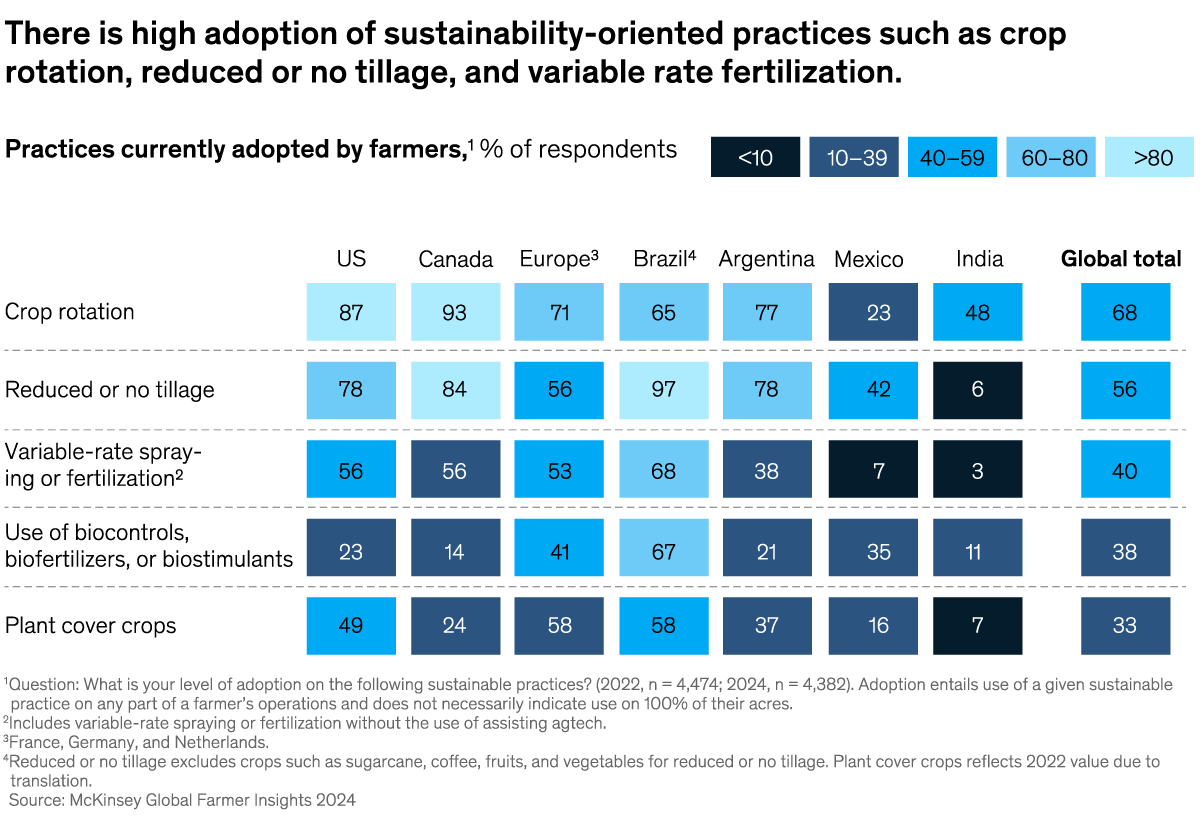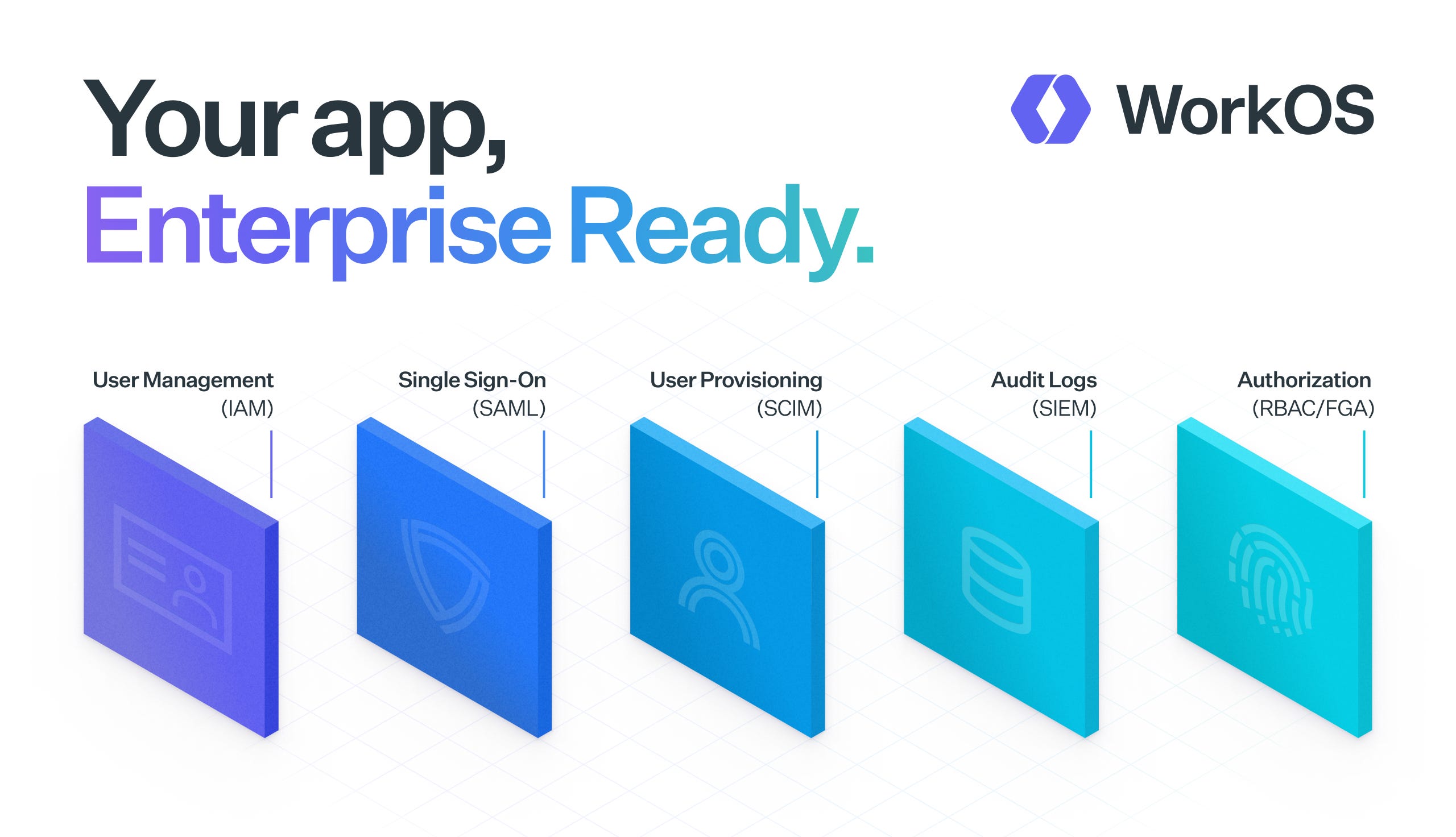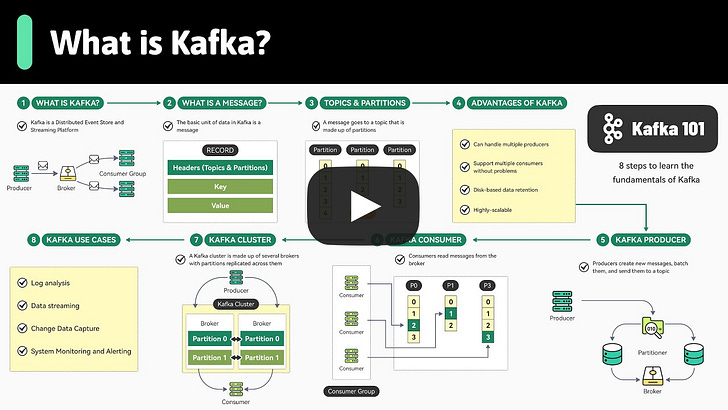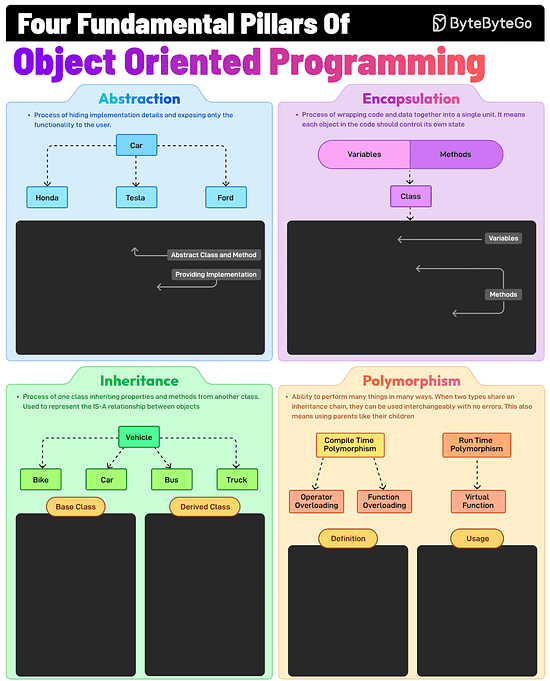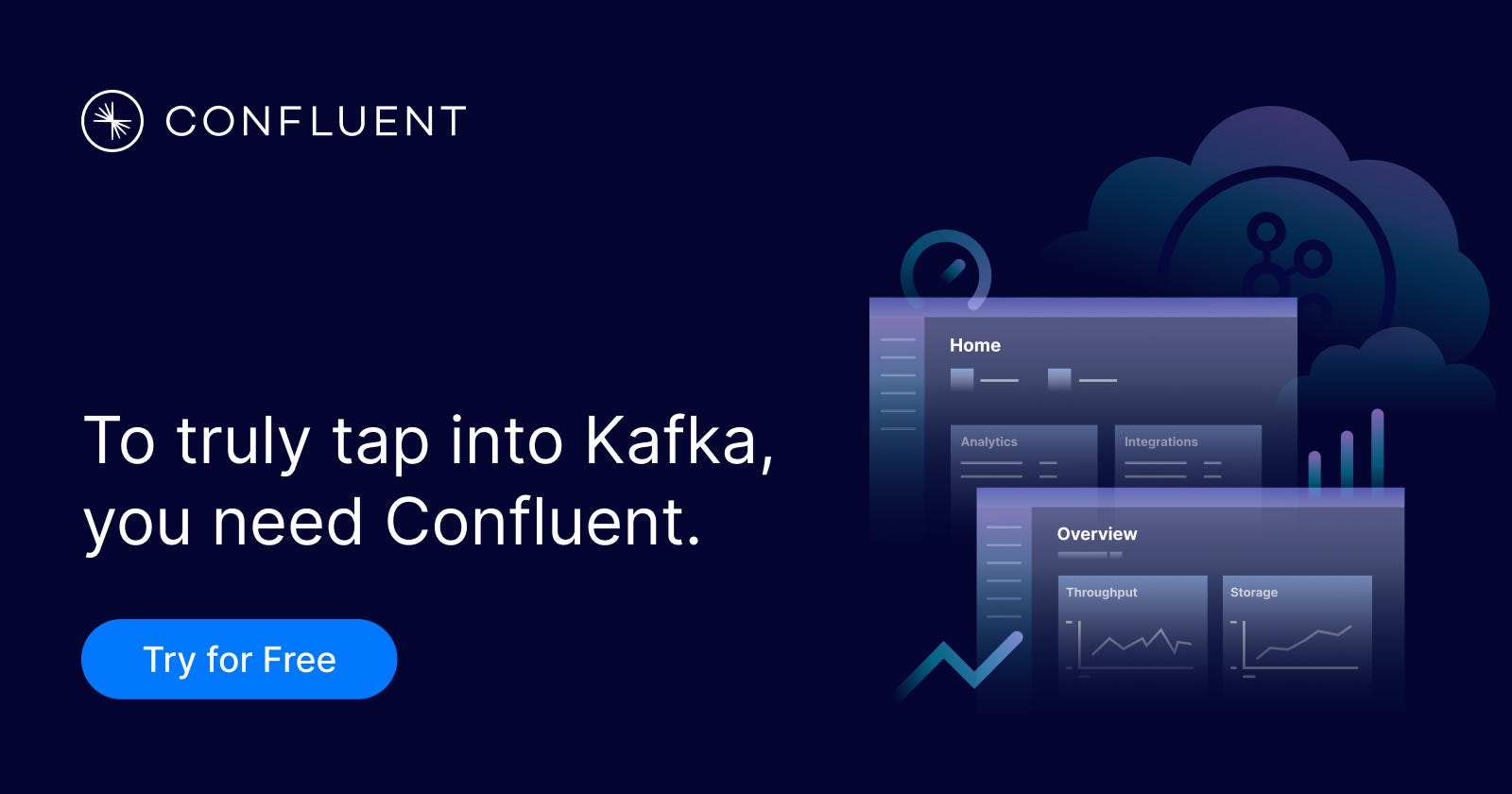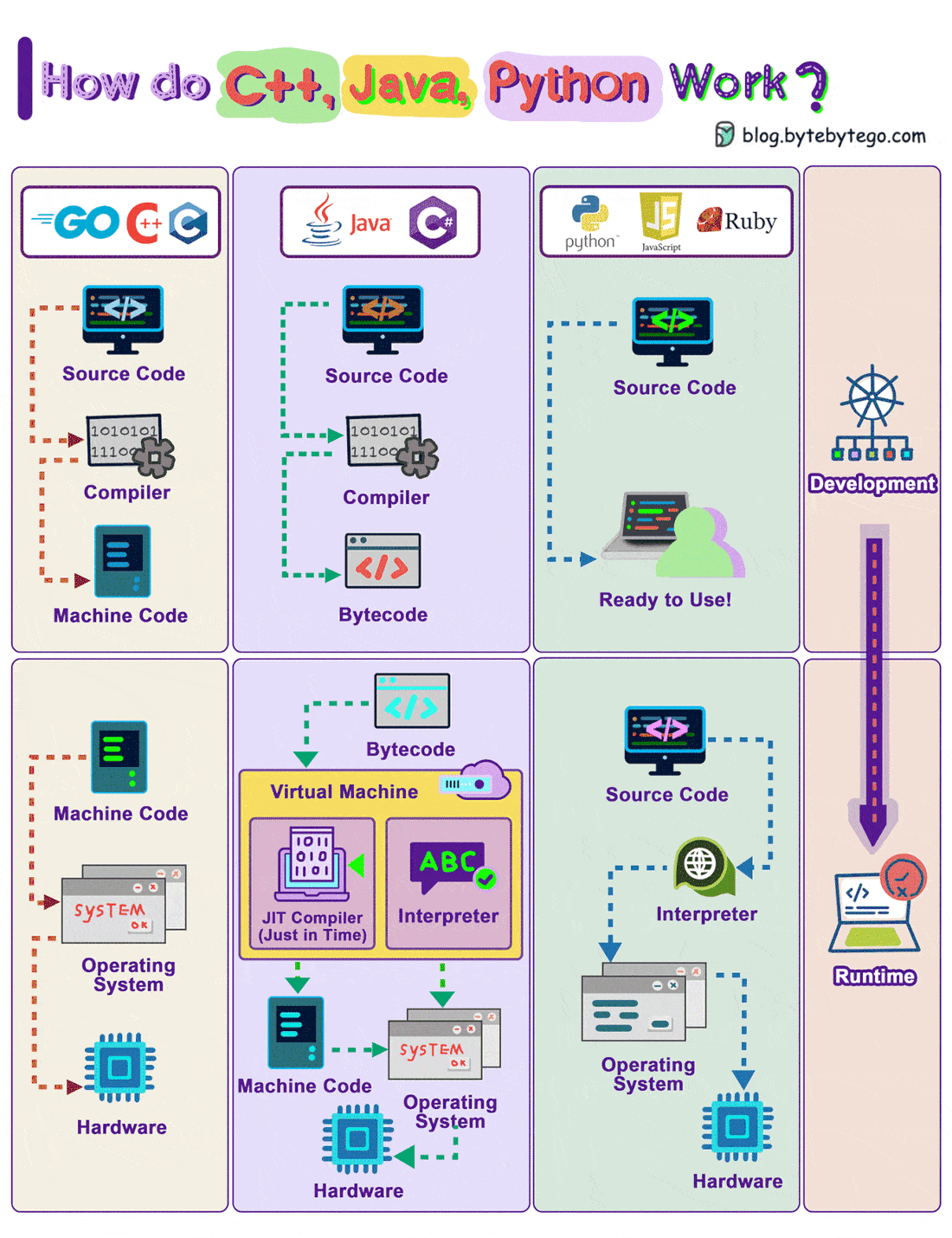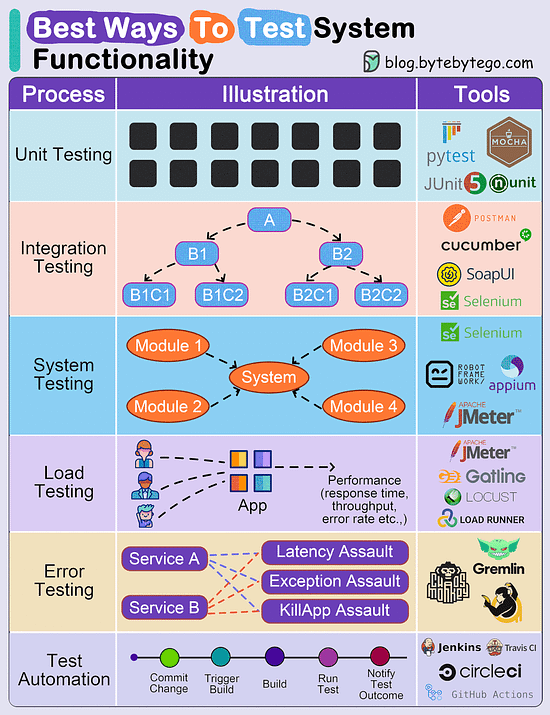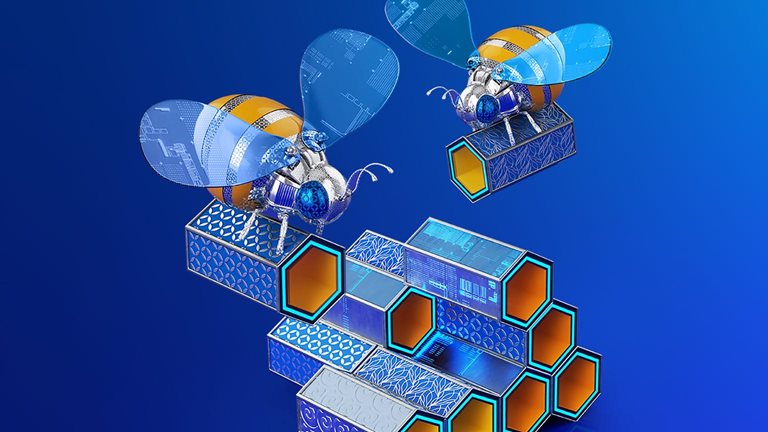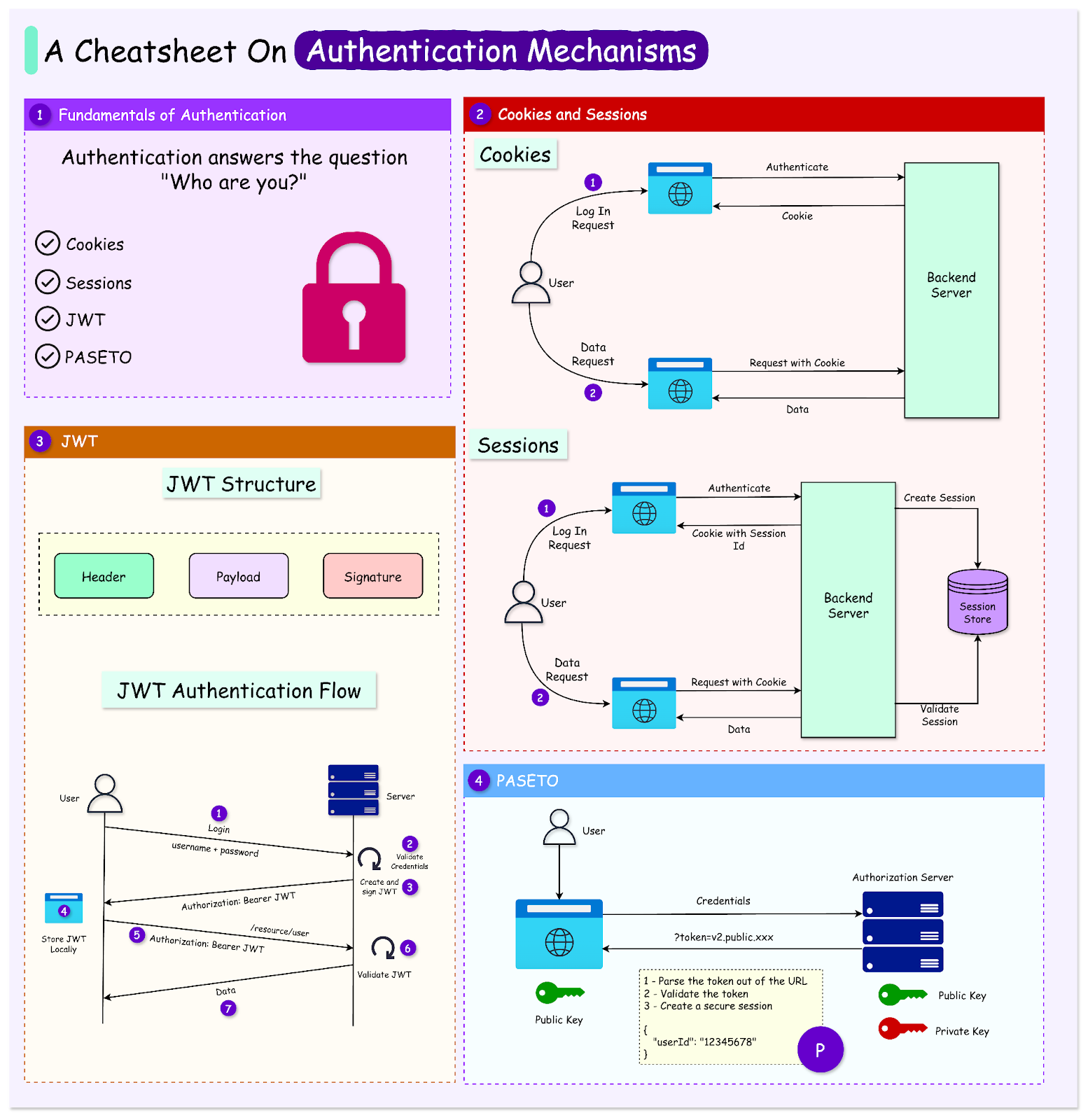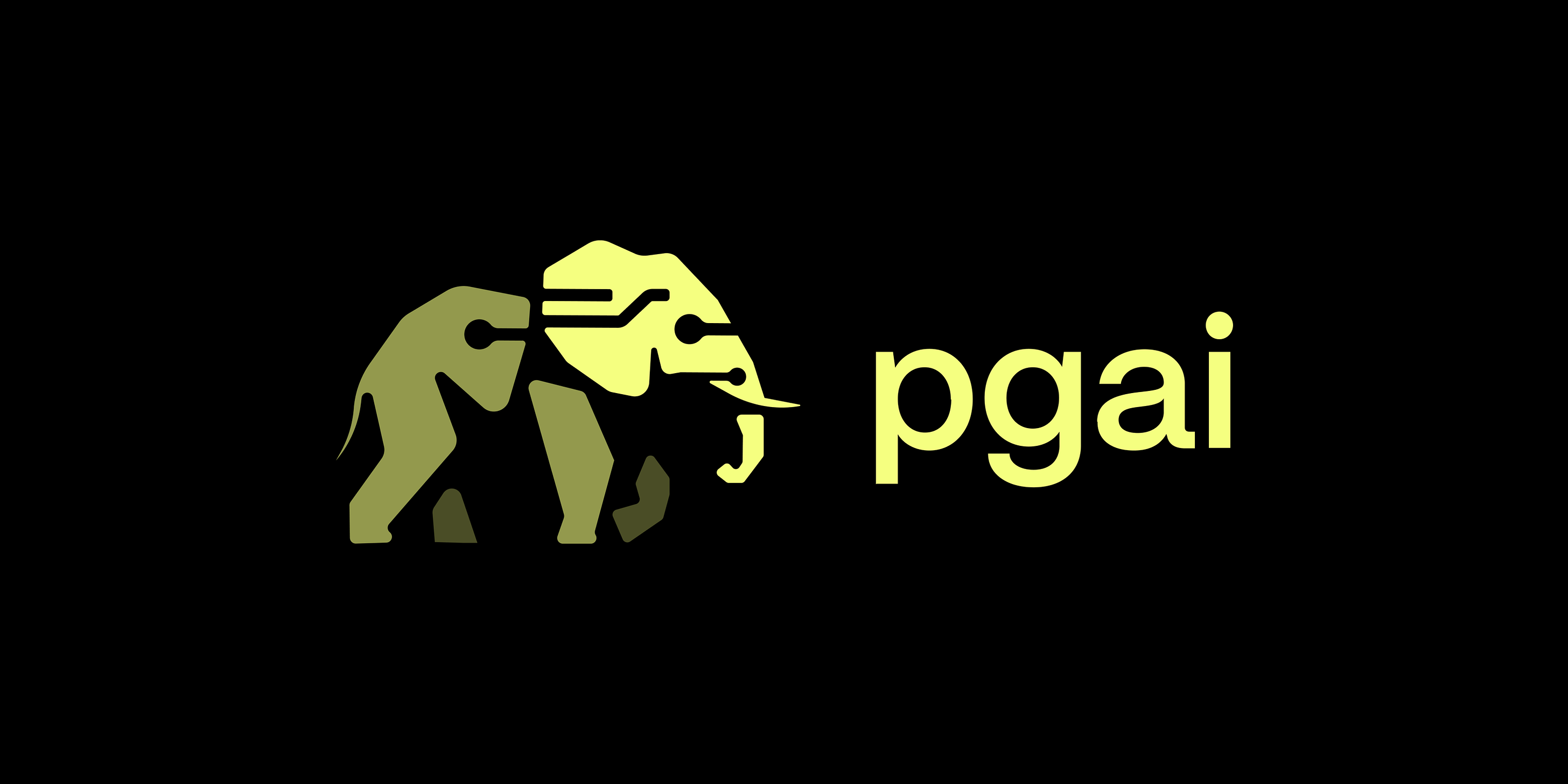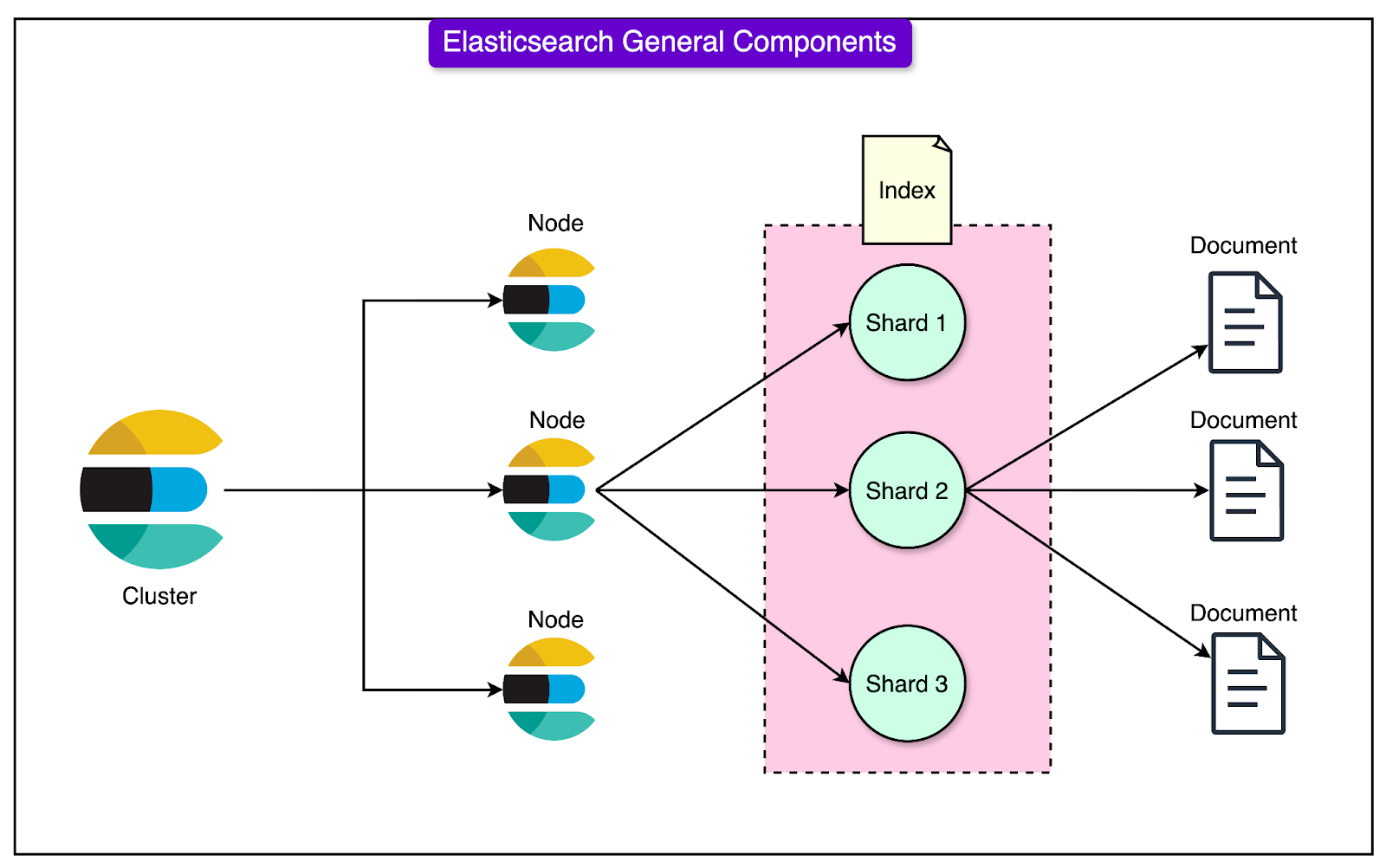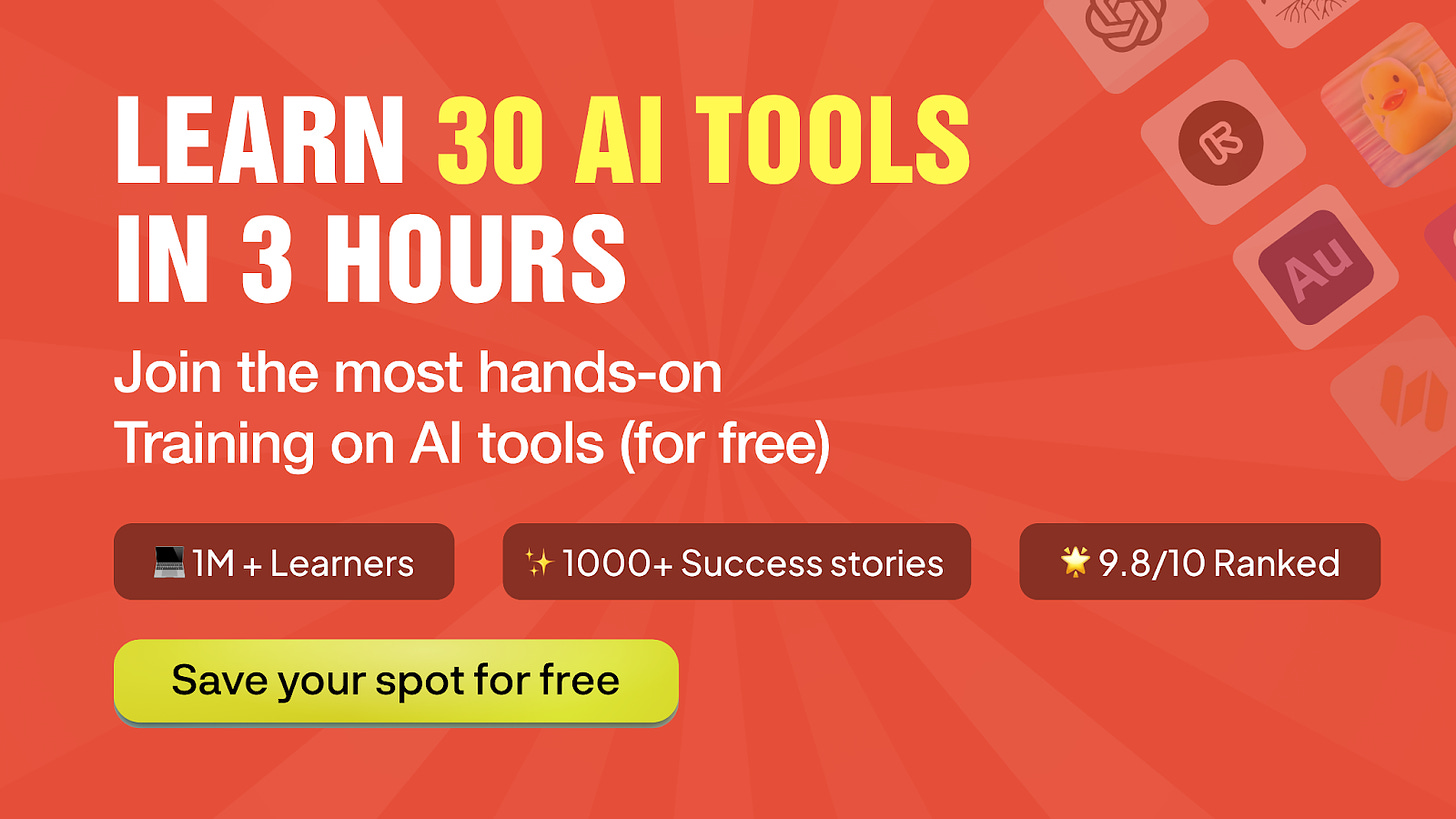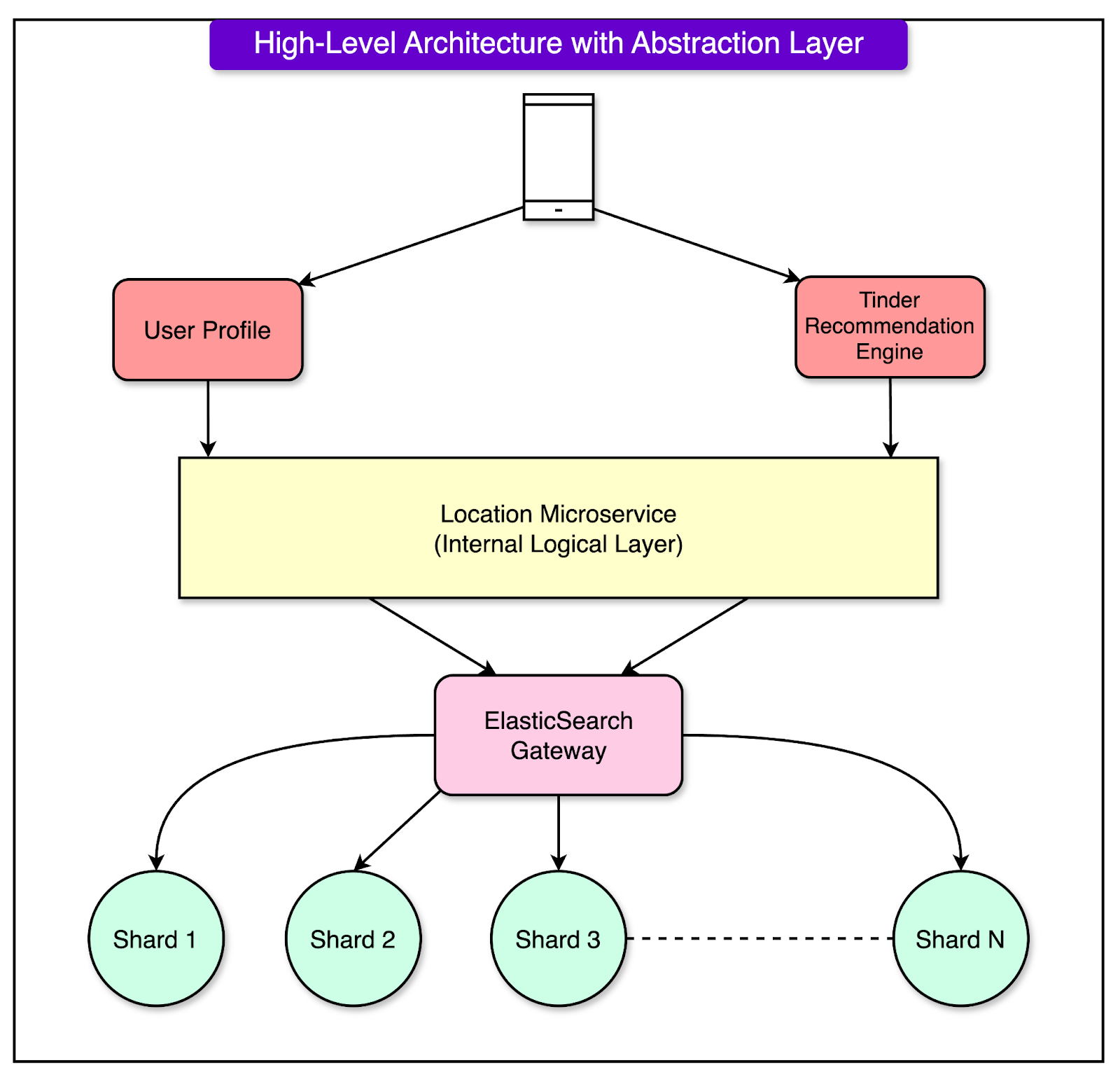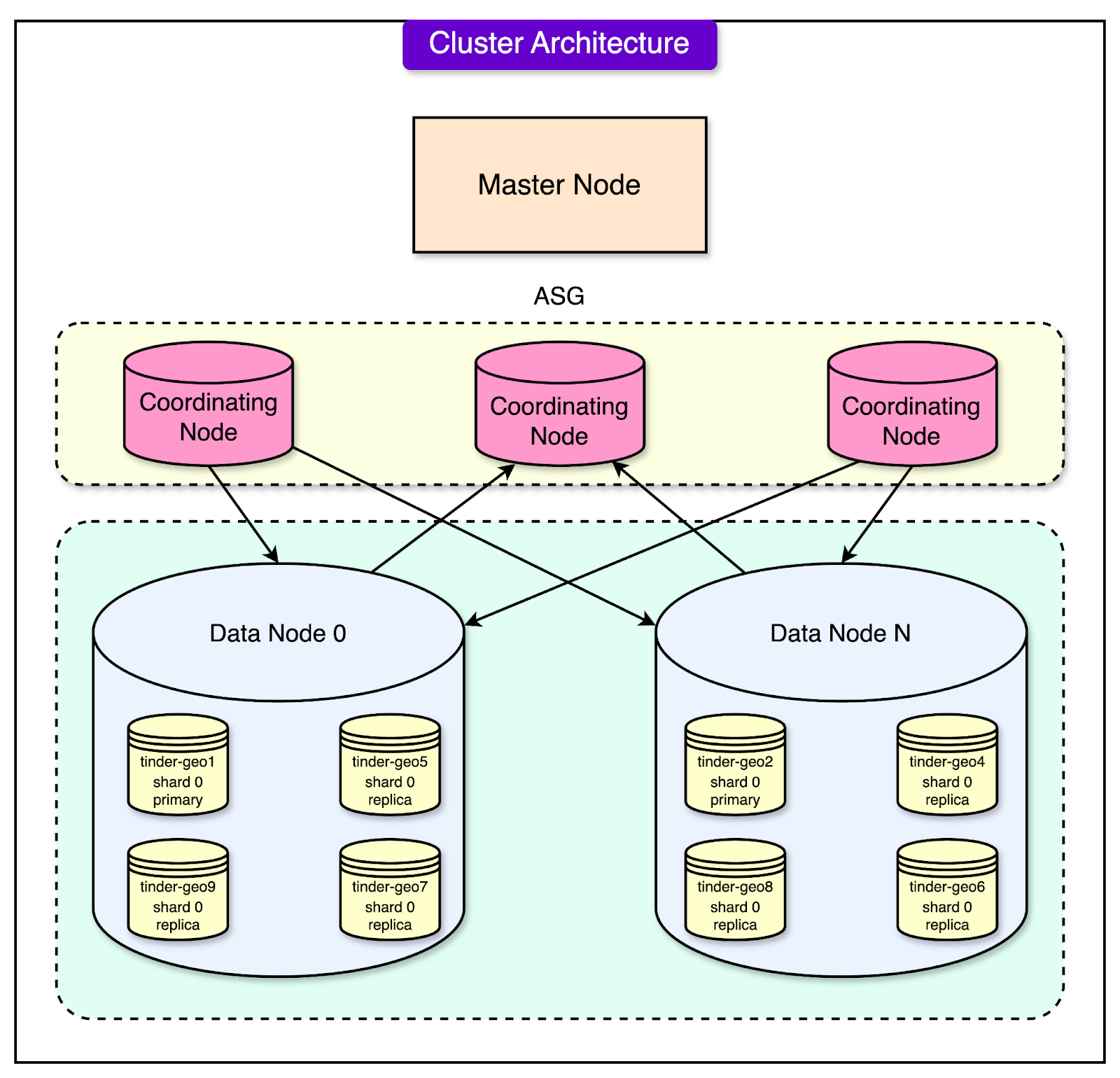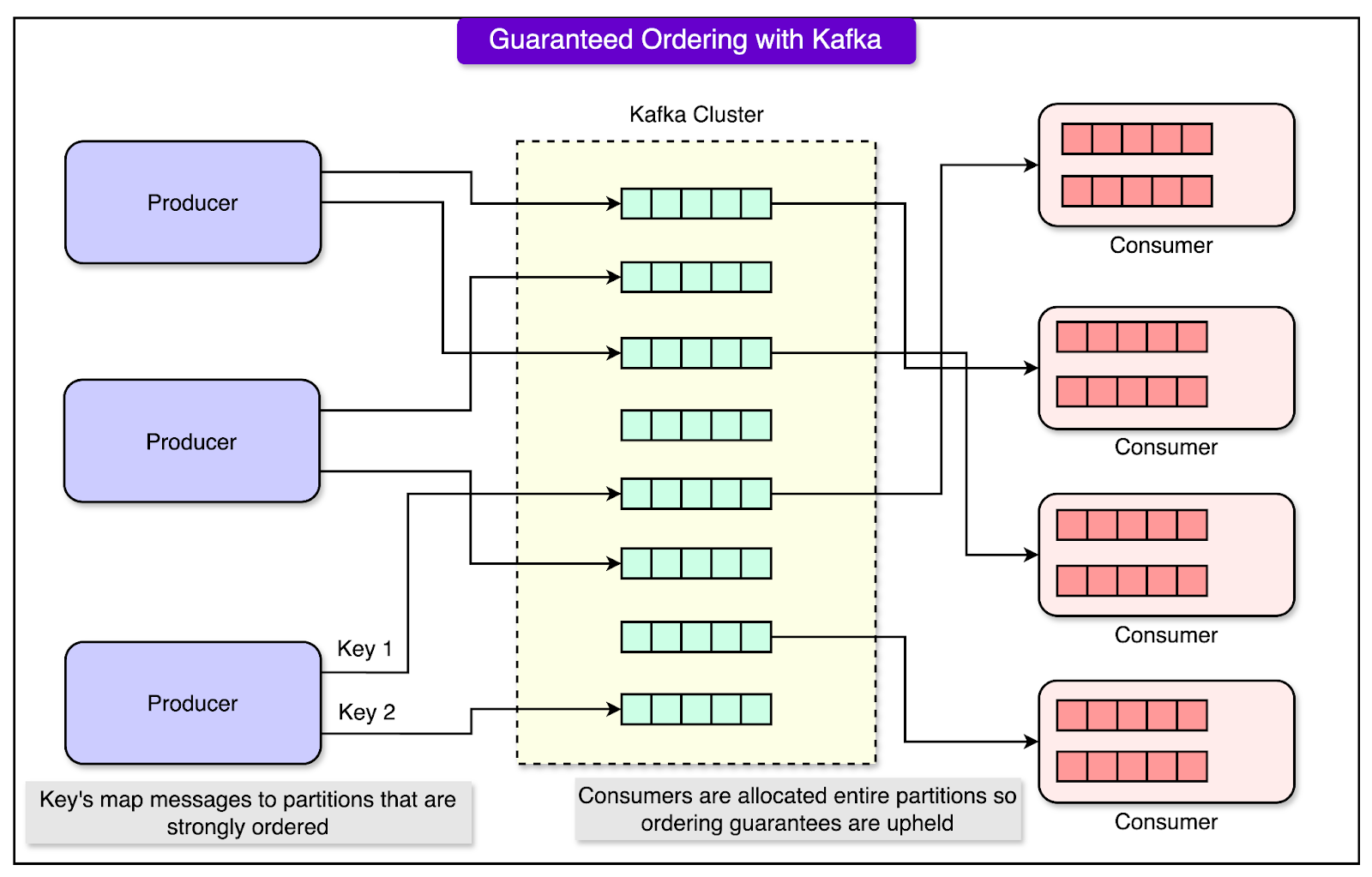Archives
- By thread 5360
-
By date
- June 2021 10
- July 2021 6
- August 2021 20
- September 2021 21
- October 2021 48
- November 2021 40
- December 2021 23
- January 2022 46
- February 2022 80
- March 2022 109
- April 2022 100
- May 2022 97
- June 2022 105
- July 2022 82
- August 2022 95
- September 2022 103
- October 2022 117
- November 2022 115
- December 2022 102
- January 2023 88
- February 2023 90
- March 2023 116
- April 2023 97
- May 2023 159
- June 2023 145
- July 2023 120
- August 2023 90
- September 2023 102
- October 2023 106
- November 2023 100
- December 2023 74
- January 2024 75
- February 2024 75
- March 2024 78
- April 2024 74
- May 2024 108
- June 2024 98
- July 2024 116
- August 2024 134
- September 2024 130
- October 2024 141
- November 2024 171
- December 2024 115
- January 2025 216
- February 2025 140
- March 2025 220
- April 2025 233
- May 2025 239
- June 2025 303
- July 2025 173
-
The year's most popular articles from McKinsey Global Institute
McKinsey&Company
At #1: Geopolitics and the geometry of global trade As 2024 draws to a close, we’re revisiting our most popular insights of the year. Today, we give you our best-read pieces from the McKinsey Global Institute, which focus on topics including navigating the energy transition, investing in productivity growth, and more. At No. 1 is "Geopolitics and the geometry of global trade," by McKinsey’s Jeongmin Seong, Olivia White, Michael Birshan, and coauthors. Read on for our full top 10, and don't miss McKinsey Publishing's "Meet the moment"—our best insights from 2024 to help you navigate change.
This email contains information about McKinsey's research, insights, services, or events. By opening our emails or clicking on links, you agree to our use of cookies and web tracking technology. For more information on how we use and protect your information, please review our privacy policy.
You received this email because you subscribed to our McKinsey Global Institute alert list.
Copyright © 2024 | McKinsey & Company, 3 World Trade Center, 175 Greenwich Street, New York, NY 10007
by "McKinsey Top Ten" <publishing@email.mckinsey.com> - 03:26 - 15 Dec 2024 -
The week in charts
The Week in Charts
Sustainable farming, the cost of natural disasters, and dynamic industries Share these insights
Did you enjoy this newsletter? Forward it to colleagues and friends so they can subscribe too. Was this issue forwarded to you? Sign up for it and sample our 40+ other free email subscriptions here.
This email contains information about McKinsey's research, insights, services, or events. By opening our emails or clicking on links, you agree to our use of cookies and web tracking technology. For more information on how we use and protect your information, please review our privacy policy.
You received this email because you subscribed to The Week in Charts newsletter.
Copyright © 2024 | McKinsey & Company, 3 World Trade Center, 175 Greenwich Street, New York, NY 10007
by "McKinsey Week in Charts" <publishing@email.mckinsey.com> - 03:20 - 14 Dec 2024 -
A proactive approach to navigating geopolitics
Plus, an essential checklist for CEOs
by "McKinsey Highlights" <publishing@email.mckinsey.com> - 12:09 - 14 Dec 2024 -
EP142: The Fundamental Pillars of Object-Oriented Programming
EP142: The Fundamental Pillars of Object-Oriented Programming
Abstraction, Encapsulation, Inheritance, and Polymorphism are the four pillars of object-oriented programming.͏ ͏ ͏ ͏ ͏ ͏ ͏ ͏ ͏ ͏ ͏ ͏ ͏ ͏ ͏ ͏ ͏ ͏ ͏ ͏ ͏ ͏ ͏ ͏ ͏ ͏ ͏ ͏ ͏ ͏ ͏ ͏ ͏ ͏ ͏ ͏ ͏ ͏ ͏ ͏ ͏ ͏ ͏ ͏ ͏ ͏ ͏ ͏ ͏ ͏ ͏ ͏ ͏ ͏ ͏ ͏ ͏ ͏ ͏ ͏ ͏ ͏ ͏ ͏ ͏ ͏ ͏ ͏ ͏ ͏ ͏ ͏ ͏ ͏ ͏ ͏ ͏ ͏ ͏ ͏ ͏ ͏ ͏ ͏ ͏ ͏ ͏ ͏ ͏ ͏ ͏ ͏ ͏ ͏ ͏ ͏ ͏ ͏ ͏ ͏ ͏ ͏ ͏ ͏ ͏ ͏ ͏ ͏ ͏ ͏ ͏ ͏ ͏ ͏ ͏ ͏ ͏ ͏ ͏ ͏ ͏ ͏ ͏ ͏ ͏ ͏ ͏ ͏ ͏ ͏ ͏ ͏ ͏ ͏ ͏ ͏ ͏ ͏ ͏ ͏ ͏ ͏ ͏ ͏ ͏ ͏ ͏ ͏ ͏ ͏ ͏ ͏ ͏ ͏ ͏ ͏ ͏ ͏ ͏ ͏ ͏ ͏ ͏ ͏ ͏ ͏ ͏ ͏ ͏ ͏ ͏ ͏ ͏ ͏ ͏ ͏ ͏ ͏ ͏ ͏ ͏ ͏ ͏ ͏ ͏ ͏ ͏ ͏ ͏ ͏ ͏ ͏ ͏ ͏ ͏ ͏ ͏ ͏ ͏ ͏ Forwarded this email? Subscribe here for moreWorkOS: Your app, Enterprise Ready (Sponsored)
WorkOS is a modern identity platform for B2B SaaS.
→ A complete user management solution that is free up to 1 million MAUs. Includes MFA, RBAC, bot protection, and user impersonation.
→ Enterprise SSO that supports any identity provider that uses SAML or OIDC protocols.
→ Directory Sync that powers user provisioning and deprovisioning for any SCIM-compliant directory.
→ Fine-Grained Authorization (FGA) that can support complex authorization schemes like Google Docs-style permissions.
→ The Admin Portal, a self-serve UI that streamlines SSO and SCIM onboarding for your customers' IT admins.WorkOS is used by hundreds of high-growth companies including Cursor, Perplexity, and Vercel.
Start deploying enterprise plans today
This week’s system design refresher:
Apache Kafka Fundamentals You Should Know (Youtube video)
The Fundamental Pillars of Object-Oriented Programming
Top 6 Multithreading Design Patterns You Must Know
How Do C++, Java, Python Work?
Explaining 9 types of API testing
REST API Vs. GraphQL
SPONSOR US
Apache Kafka Fundamentals You Should Know
The Fundamental Pillars of Object-Oriented Programming
Abstraction, Encapsulation, Inheritance, and Polymorphism are the four pillars of object-oriented programming. What do they mean?
Abstraction
This is the process of hiding implementation details and showing only the essential features of an object. For example, a Vehicle class with an abstract stop method.Encapsulation
It involves wrapping data (fields) and methods in a single unit (class) and restricting direct access using access modifiers. For example, private fields with public getters and setters.Inheritance
The process of creating a new class (child) that inherits attributes and methods from an existing class (parent), thereby promoting code reuse. For example, a Car class inherits from a Vehicle class.Polymorphism
It allows methods to perform differently based on the object they are invoked on. When two types share an inheritance chain, they can be used interchangeably with no errors.
Over to you: Do you use object-oriented programming?
Building Scalable Systems? Let Confluent Cloud Handle Kafka for You (Sponsored)
Simplify your architecture with Confluent Cloud, the fully managed Apache Kafka solution. Designed for developers and architects, it offers effortless scalability, enterprise-grade security, and seamless integration with 120+ pre-built connectors. Say goodbye to managing infrastructure and focus on building real-time, scalable systems that focus on building critical real-time applications.
Try Confluent Cloud for free PLUS $400 credits on us!
Top 6 Multithreading Design Patterns You Must Know
Multithreading enables a single program or process to execute multiple tasks concurrently. Each task is a thread. Think of threads as lightweight units of execution that share the resources of the process such as memory space.
However, multithreading also introduces complexities like synchronization, communication, and potential race conditions. This is where patterns help.Producer-Consumer Pattern
This pattern involves two types of threads: producers generating data and consumers processing that data. A blocking queue acts as a buffer between the two.Thread Pool Pattern
In this pattern, there is a pool of worker threads that can be reused for executing tasks. Using a pool removes the overhead of creating and destroying threads. Great for executing a large number of short-lived tasks.Futures and Promises Pattern
In this pattern, the promise is an object that holds the eventual results and the future provides a way to access the result. This is great for executing long-running operations concurrently without blocking the main thread.Monitor Object Pattern
Ensures that only one thread can access or modify a shared resource within an object at a time. This helps prevent race conditions. The pattern is required when you need to protect shared data or resources from concurrent access.Barrier Pattern
Synchronizes a group of threads. Each thread executes until it reaches a barrier point in the code and blocks until all threads have reached the same barrier. Ideal for parallel tasks that need to reach a specific stage before starting the next stage.Read-Write Lock Pattern
It allows multiple threads to read from a shared resource but only allows one thread to write to it at a time. Ideal for managing shared resources where reads are more frequent than writes.
Over to you: Which other multithreading design pattern will you add to the list?
How Do C++, Java, Python Work?
The diagram shows how the compilation and execution work.
Compiled languages are compiled into machine code by the compiler. The machine code can later be executed directly by the CPU. Examples: C, C++, Go.
A bytecode language like Java, compiles the source code into bytecode first, then the JVM executes the program. Sometimes JIT (Just-In-Time) compiler compiles the source code into machine code to speed up the execution. Examples: Java, C#
Interpreted languages are not compiled. They are interpreted by the interpreter during runtime. Examples: Python, Javascript, Ruby
Compiled languages in general run faster than interpreted languages.Explaining 9 types of API testing
Smoke Testing
This is done after API development is complete. Simply validate if the APIs are working and nothing breaks.Functional Testing
This creates a test plan based on the functional requirements and compares the results with the expected results.Integration Testing
This test combines several API calls to perform end-to-end tests. The intra-service communications and data transmissions are tested.Regression Testing
This test ensures that bug fixes or new features shouldn’t break the existing behaviors of APIs.Load Testing
This tests applications’ performance by simulating different loads. Then we can calculate the capacity of the application.Stress Testing
We deliberately create high loads to the APIs and test if the APIs are able to function normally.Security Testing
This tests the APIs against all possible external threats.UI Testing
This tests the UI interactions with the APIs to make sure the data can be displayed properly.Fuzz Testing
This injects invalid or unexpected input data into the API and tries to crash the API. In this way, it identifies the API vulnerabilities.
REST API Vs. GraphQL
When it comes to API design, REST and GraphQL each have their own strengths and weaknesses.
REST
Uses standard HTTP methods like GET, POST, PUT, DELETE for CRUD operations.
Works well when you need simple, uniform interfaces between separate services/applications.
Caching strategies are straightforward to implement.
The downside is it may require multiple roundtrips to assemble related data from separate endpoints.
GraphQL
Provides a single endpoint for clients to query for precisely the data they need.
Clients specify the exact fields required in nested queries, and the server returns optimized payloads containing just those fields.
Supports Mutations for modifying data and Subscriptions for real-time notifications.
Great for aggregating data from multiple sources and works well with rapidly evolving frontend requirements.
However, it shifts complexity to the client side and can allow abusive queries if not properly safeguarded
Caching strategies can be more complicated than REST.
The best choice between REST and GraphQL depends on the specific requirements of the application and development team. GraphQL is a good fit for complex or frequently changing frontend needs, while REST suits applications where simple and consistent contracts are preferred.
SPONSOR US
Get your product in front of more than 1,000,000 tech professionals.
Our newsletter puts your products and services directly in front of an audience that matters - hundreds of thousands of engineering leaders and senior engineers - who have influence over significant tech decisions and big purchases.
Space Fills Up Fast - Reserve Today
Ad spots typically sell out about 4 weeks in advance. To ensure your ad reaches this influential audience, reserve your space now by emailing sponsorship@bytebytego.com.
Like
Comment
Restack
© 2024 ByteByteGo
548 Market Street PMB 72296, San Francisco, CA 94104
Unsubscribe
by "ByteByteGo" <bytebytego@substack.com> - 11:45 - 14 Dec 2024 -
Un enfoque proactivo para navegar por la geopolítica
Además, un checklist esencial para CEOs Los líderes empresariales ven hoy las tensiones geopolíticas como el mayor riesgo para el crecimiento económico. Y aunque entienden que se está produciendo un cambio en el orden global, deben ir más allá de mitigar los riesgos geopolíticos para también aprovechar las oportunidades, señalan Cindy Levy, Shubham Singhal y Matt Watters en nuestro artículo principal. Otros temas destacados son:
•
Cómo un checklist del CEO puede ayudar a los líderes a llevar el desempeño de su organización al siguiente nivel
•
Navegar por un laberinto de desafíos complejos en la industria de la moda
•
El futuro de la función financiera y el liderazgo empresarial
•
Cómo la vulnerabilidad puede aumentar el potencial de liderazgo
La selección de nuestros editores
LOS DESTACADOS DE ESTE MES

Checklist esencial para CEOs: Preguntas que todo director ejecutivo debería poder responder
La mayoría de los mejores CEOs basan su éxito en un conjunto de mentalidades rectoras. Este checklist les ayuda a convertir esas mentalidades en prácticas que pueden llevar a sus empresas a grandes alturas.
Convierta las mentalidades en prácticas
El estado de la moda 2025: Desafíos a cada paso
La industria mundial de la moda se enfrenta a la incertidumbre económica, un mercado dinámico y cambios en el comportamiento de los consumidores. Encontrar focos de crecimiento implica navegar por un complejo laberinto.
Identifique los puntos positivos
Cómo será la función financiera del futuro impulsada por la IA
Sarah Friar, veterana de la tecnología y directora financiera de OpenAI, habla del potencial positivo de la inteligencia artificial (IA) generativa para cambiar el trabajo, la sociedad y la democracia; de cómo está transformando la función financiera, y del poder de las mujeres fundadoras.
Ocupe una posición de impacto
Cómo los líderes pueden aprovechar el poder de la vulnerabilidad
Mostrar vulnerabilidad puede generar vínculos y confianza. Un punto de partida: crear una lista de “cosas por ser” en lugar de una lista de “cosas por hacer”.
Genere confianza
Cómo los bancos pueden potenciar la velocidad y la productividad de la tecnología
Las instituciones financieras pueden liberar la productividad de sus equipos de ingeniería de software para impulsar significativamente la innovación tecnológica sin aumentar los presupuestos de TI.
Saque más partido a sus inversiones
Gestión activa de carteras: Cinco ideas prácticas para crear valor
Los repuntes económicos van y vienen, y los programas de optimización de costos solo llevan a una organización hasta cierto punto. Pero la gestión activa de carteras es la clave infrautilizada para crear el máximo valor.
El momento ideal es ahoraEsperamos que disfrute de los artículos en español que seleccionamos este mes y lo invitamos a explorar también los siguientes artículos en inglés.

McKinsey Explainers
Find direct answers to complex questions, backed by McKinsey’s expert insights.
Learn more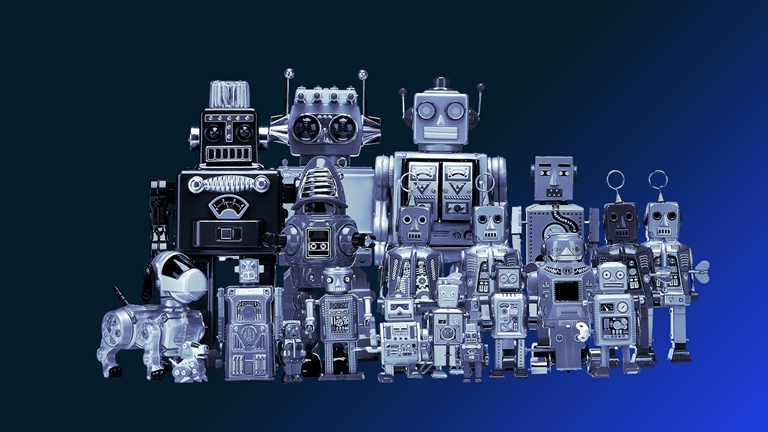
McKinsey Themes
Browse our essential reading on the topics that matter.
Get up to speed
McKinsey on Lives & Legacies
Monthly obituaries from business and society, highlighting the lasting legacies of executives and leaders from around the globe.
Explore the latest obituaries
The Weekend Read

McKinsey Classics
Most digital strategies don’t reflect how digital is changing economic fundamentals, industry dynamics, or what it means to compete. Read our 2018 classic “Why digital strategies fail” to learn more.
Rewind
Mind the Gap
Biweekly curated reads on Gen Z in the workplace.
Subscribe now— Edited by Joyce Yoo, editor, New York
COMPARTA ESTAS IDEAS
¿Disfrutó este boletín? Reenvíelo a colegas y amigos para que ellos también puedan suscribirse. ¿Se le remitió este articulo? Regístrese y pruebe nuestras más de 40 suscripciones gratuitas por correo electrónico aquí.
Este correo electrónico contiene información sobre la investigación , los conocimientos, los servicios o los eventos de McKinsey. Al abrir nuestros correos electrónicos o hacer clic en los enlaces, acepta nuestro uso de cookies y tecnología de seguimiento web. Para obtener más información sobre cómo usamos y protegemos su información, consulte nuestra política de privacidad.
Recibió este correo electrónico porque es un miembro registrado de nuestro boletín informativo Destacados.
Copyright © 2024 | McKinsey & Company, 3 World Trade Center, 175 Greenwich Street, New York, NY 10007
by "Destacados de McKinsey" <publishing@email.mckinsey.com> - 08:34 - 14 Dec 2024 -
The year's most popular articles from the McKinsey Quarterly
McKinsey&Company
At #1: A generative AI reset: Rewiring to turn potential into value in 2024 As 2024 draws to a close, we’re revisiting our most popular insights of the year. Today, we give you our best-read pieces from the McKinsey Quarterly, which focus on topics including the human side of gen AI, rethinking your talent strategy, and the latest on healthy organizations. At No. 1 is "A generative AI reset: Rewiring to turn potential into value in 2024," by McKinsey’s Eric Lamarre, Alex Singla, Alexander Sukharevsky, and Rodney Zemmel. Read on for our full top 10, and don't miss McKinsey Publishing's "Meet the moment"—our best insights from 2024 to help you navigate change.
This email contains information about McKinsey’s research, insights, services, or events. By opening our emails or clicking on links, you agree to our use of cookies and web tracking technology. For more information on how we use and protect your information, please review our privacy policy.
You received this email because you subscribed to our McKinsey Quarterly alert list.
Copyright © 2024 | McKinsey & Company, 3 World Trade Center, 175 Greenwich Street, New York, NY 10007
by "McKinsey Top Ten" <publishing@email.mckinsey.com> - 10:37 - 13 Dec 2024 -
When tailoring stakeholder comms, think EDGE
The Shortlist
Emerging ideas for leaders Curated by Alex Panas, global leader of industries, & Axel Karlsson, global leader of functional practices and growth platforms
Welcome to the latest edition of the CEO Shortlist, a biweekly newsletter of our best ideas for the C-suite. This week, we feature our latest thinking on how CEOs can engage their stakeholders. We appreciate the opportunity to connect and hope you find our perspectives novel and insightful. Please let us know what you think! You can reach us at Alex_Panas@mckinsey.com and Axel_Karlsson@mckinsey.com. Thank you.
—Alex and Axel
Shareholders. Employees. Customers and governments. All are critical constituents for big-league CEOs. And according to our research, the world’s best CEOs know how to communicate clearly with these disparate audiences. We’ve distilled this level of engagement into four key elements. Leading CEOs have an expanded view of their role as the company’s bridge to the external world, a distinctive narrative as “storyteller in chief,” a growth-oriented mindset that empowers a team of internal and external ambassadors to articulate the company’s vision, and an engaged posture that systematically strengthens stakeholder connections. Read our latest insights and create your own EDGE.
We hope you find these ideas inspiring and helpful. See you in 2025 with more McKinsey ideas for the CEO and others in the C-suite.Share these insights
This email contains information about McKinsey’s research, insights, services, or events. By opening our emails or clicking on links, you agree to our use of cookies and web tracking technology. For more information on how we use and protect your information, please review our privacy policy.
You received this email because you subscribed to The CEO Shortlist newsletter.
Copyright © 2024 | McKinsey & Company, 3 World Trade Center, 175 Greenwich Street, New York, NY 10007
by "McKinsey CEO Shortlist" <publishing@email.mckinsey.com> - 04:31 - 13 Dec 2024 -
How retailers are enticing shoppers this holiday season
Only McKinsey Perspectives
Plus, how US consumers are feeling Brought to you by Alex Panas, global leader of industries, & Axel Karlsson, global leader of functional practices and growth platforms
Welcome to the latest edition of Only McKinsey Perspectives. We hope you find our insights useful. Let us know what you think at Alex_Panas@McKinsey.com and Axel_Karlsson@McKinsey.com.
—Alex and Axel
•
Looking to save. Heading into the year-end holidays, US consumers are not feeling good about their economic prospects. Consumer sentiment is lower than it was prepandemic, explains McKinsey partner Tamara Charm, and when it comes to holiday shopping in 2024, consumers are hoping to save money. Charm says that they’re looking for sales and will be shopping throughout the holiday season to try to get what they want for less.
—Edited by Belinda Yu, editor, Atlanta
This email contains information about McKinsey's research, insights, services, or events. By opening our emails or clicking on links, you agree to our use of cookies and web tracking technology. For more information on how we use and protect your information, please review our privacy policy.
You received this email because you subscribed to the Only McKinsey Perspectives newsletter, formerly known as Only McKinsey.
Copyright © 2024 | McKinsey & Company, 3 World Trade Center, 175 Greenwich Street, New York, NY 10007
by "Only McKinsey Perspectives" <publishing@email.mckinsey.com> - 01:43 - 13 Dec 2024 -
MACHINERY DIRECTIVE 2006/42/EC TRAINING - In House Training
MACHINERY DIRECTIVE 2006/42/EC TRAINING
This program can be specially tailored and customized to meet your training objectives
Kindly find above attached for the full brochure for this program
We hope you find it informative and interesting, and we look forward to seeing you soon
(SBL Khas / HRD CORP Claimable Course)
2 Days In-House Program By Gobalan
INTRODUCTION:
The aim of this 2 days Machinery Directive 2006/42/EC Training is to give machine manufacturers, modifiers, and those involved in pre-purchase auditing, an understanding of what is required to demonstrate compliance with the Occupational Safety and Health Administration (OSHA) requirements as per the European Community Machinery Directive 2006/42/EC.
BENEFITS:
By the end of this training, participants will be able to:
• Know the fundamentals of OSHA Machinery Directive 2006/42/EC
• Understand the Occupational Safety and Health requirement of the European Community.
• Gain a good understanding of what is required to demonstrate compliance with the Machinery Directive 2006/42/EC (MD) for the European Market
• Learn how to establish a design risk assessment (DRA) team and process for a new project
• Learn what to expect in the contents of the TCF (Technical construction file)
• Understand and apply appropriate technical terms and definitions in accordance with the Machinery Directive 2006/42/EC.
• Know how to regulate and comply to all legal aspects under 2006/42/EC
• Demonstrate and evidence compliance against the Essential Health and Safety Requirements (EHSRs) and common EN standards as a presumption of conformity.
WHO SHOULD ATTEND:
Engineers, Technicians, Supervisors, Designers, Project leads.
TRANING METHODOLOGY:
70% theory and 30% group activities and case studies.
Day 1 – 9.00am to 5.00pm
- Pre-Test Assessment
- Introduction: Machinery Directive 2006/42/EC
- Legislative Requirements - European Community
- European Pillar of Social Rights
- Safety and Health Legislation
- EU National laws by Member States unity.
- EU Strategic Framework on Health and Safety at Work 2021-2027
- Definition: Key priorities and actions for improving workers’ health and safety
- By way of addressing rapid changes in the economy, demography, and work patterns.
- Strategic priorities
- Involving EU institutions
- Member States
- Social partners and other stakeholders
- Focuses on three key priorities:
- Anticipating and managing change in the context of green, digital, and demographic transitions.
- Improving the prevention of work-related accidents and diseases and striving towards a Vision Zero approach to work-related deaths.
- Increasing preparedness to respond to current and future health crises.
- Implementing the framework — a key role for EU-OSHA
- Enforcement
- Social dialogue
- Funding
- Awareness-raising
- Data collection
- European Directives on Safety and Health at Work
- The OSH Framework Directive
- Workplaces, equipment, signs, personal protective equipment
- Exposure to chemical agents and chemical safety
- Exposure to physical hazards
- Exposure to biological agents
- Provisions on workload, ergonomical and psychosocial risks
- Sector specific and worker related provisions
- Individual directives tailor the principles of the Framework Directive to:
- Specific tasks (e.g. manual handling of loads)
- Specific hazards at work (e.g. exposure to dangerous substances or physical agents)
- Specific workplaces and sectors (e.g. temporary work sites, extractive industries, fishing vessels)
- Specific groups of workers (e.g. pregnant women, young workers, workers with a fixed duration employment contract)
- Certain work-related aspects (e.g. organisation of working time)
- Directive 89/391
- OSH "Framework Directive"
The introduction of measures to encourage improvements in the safety and health of workers at work - "Framework Directive".
Framework Directive brought about considerable innovation including the following:
- The term ‘working environment’ was set in accordance with International Labour Organization (ILO) Convention No. 155 and defines a modern approach taking into account technical safety as well as general prevention of ill-health.
- The Directive aims to establish an equal level of safety and health for the benefit of all workers (the only exceptions are domestic workers and certain public and military services).
- The Directive obliges employers to take appropriate preventive measures to make work safer and healthier.
- The Directive introduces as a key element the principle of risk assessment and defines its main elements (e.g. hazard identification, worker participation, introduction of adequate measures with the priority of eliminating risk at source, documentation and periodical re-assessment of workplace hazards).
- The new obligation to put in place prevention measures implicitly stresses the importance of new forms of safety and health management as part of general management processes.
- Occupational Safety and Health Administration – OSHA European Community Directives
- OSH is good for business
- Improved productivity through less sickness absence
- Cutting healthcare costs
- Keeping older workers in employment
- Stimulating more efficient working methods and technologies
- Reducing the number of people who have to cut their hours to care for a family member
- Improving compliance with OSH regulations
- Legal enforcement of regulations
- Supply chain influences
- External OSH services
- Social or sectoral norms
- Financial support.
- Dangerous substances
- Allergies
- Skin diseases
- Cancers
- Reproductive problems and birth defects
- Respiratory diseases
- Poisoning
- Digitalisation of work
- Advance robotics and AI
- Worker management through AI
- Digital platform work
- Smart digital systems
- Remote work
- OSHA Act - Amendments January 2022
- Responsibilities
- Standards and harmonized standards
- Testing and assessment
- Introduction to Notified bodies
- Resources
- Compliance to 2006/42/EC Directives
- Machinery: Compulsory and Mandory
- Requirements within the Machinery Directive
- CE Marking and Legal obligation
- Compilation of the machine’s Technical Construction File
- Raising of a Declaration of Conformity or Declaration of Incorporation
- Testing Methods and Procedures
- Technical Construction File for both Europe EU and non- Europe EU businesses
- Low Voltage Directive
- Harmonized standards
- Technical
documents
- Technical file contents
- Technical file format
- Workplaces, Equipment, Signs, Personal Protective Equipment
- OSH Directives
- Directive 2009/104/EC – use of work equipment
- The Directive lays down minimum health and safety requirements for the use of work equipment in the workplace.
- Directive 99/92/EC - risks from explosive atmospheres
- The Directive establishes minimum requirements for improving the safety and health protection of workers potentially at risk from explosive atmospheres.
- Directive 92/58/EEC - safety and/or health signs
- Directive 92/58/EEC lays down the requirements for safety and health signs at work that employers must provide where workers are still at risk despite other preventive measures.
- Directive 89/656/EEC - use of personal protective equipment
- The Directive lays down minimum requirements for the use of personal protective equipment used by workers at work, which are necessary when risks cannot be sufficiently controlled by technical and organisational measures.
- Directive 89/654/EEC - workplace requirements
- The Workplace Directive provides for minimum requirements for workplaces covering issues such as traffic routes, workroom dimensions and indoor air quality.
- OSH Related Aspects
- Regulation 2023/1230/EU - machinery
- This Regulation lays down health and safety requirements for the design and construction of machinery, placed on the European market.
- Regulation 2023/988/EU - general product safety
- Regulation (EU) 2016/425 on personal protective equipment
- Directive 2014/34/EU - equipment and protective systems intended for use in potentially explosive atmospheres
- The ATEX directive sets forth uniform rules across the European Union for the making available on the market and putting into service of equipment and protective systems intended for use in potentially explosive atmospheres.
- Directive 2014/68/EU - pressure equipment
- Directive 2014/68/EU applies to the design, manufacture and conformity assessment of Directive 2014/29/EU - simple pressure vessels
Day 2: 9.00am to 5.00pm
- Exposure to Chemical Agents and Chemical Safety
- OSH Directives
- Directive 2019/1831 - indicative occupational exposure limit values
- Directive 2009/148/EC - exposure to asbestos at work
- Directive 2006/15/EC - indicative occupational exposure limit values
- Directive 2004/37/EC - carcinogens, mutagens or reprotoxic substances at work
- Directive 2000/39/EC - indicative occupational exposure limit values
- Directive 98/24/EC - risks related to chemical agents at work
- Exposure to Physical Hazards
- OSH directives
- Directive 2013/59/Euratom - protection against ionising radiation
- Directive 2013/35/EU - electromagnetic fields
- Directive 2006/25/EC - artificial optical radiation
- Directive 2003/10/EC - noise
- Directive 2002/44/EC - vibration
- Provisions on Workload, Ergonomic and Psychosocial Risks
- OSH Directives
- Directive 90/270/EEC - display screen equipment (workstations and worker)
- Directive 90/269/EEC - manual handling of loads
- OSH Related Aspects
- Directive 2019/1158 - work-life balance for parents and careers
- Directive 2019/1152/EU - Transparent and predictable working conditions
- Directive 2003/88/EC - working time
- Line Visit – Hazards Evaluation
- Hazards – Aspects and Impacts
- Risk Assessment
- Risk Severity
- Prevention
- Substitute
- Controls
- PPEs
- Machinery Risk Assessment - OSH
- Identifying and applying standards
- Responsibilities
- The Machinery Directive EHSRs
- Mechanical and electrical risk assessment and safety requirement
- Plant visit: Practical examples
- ATEX Compliance and Risk Assessment - OSH
- Practical risk assessments
- Equipment groups
- Certification requirements
- Identifying and applying standards
- Zoning and ignition hazard assessment
- Dusts and vapours
- Requirements for electrical and mechanical equipment
- Notified Body Certification
- DSEAR
- Electrical Equipment Safety - OSH
- Electrical safety and EMC
- Low Voltage Directive
- Radio Equipment Directive
- Identifying and applying standards
- Testing and assessment
- Environmental requirements - Eco-Design, WEEE, RoHS, REACH
- Technical documentation, declarations and certificates
- Buying Machinery – Safety Compliance - OSH
- Machinery specifications
- Machinery Directive requirements
- Supplier questions
- Documentation
- Dealing with partly completed machinery and components
- In-service obligations
- Modifications
- Provision and Use of Work Equipment Regulations (PUWER)
- Environmental Directives - OSH
- Eco-Design framework and specific regulations
- Performance measurements
- Banned substances
- Directives and regulations
- Technical documentation and evidence of compliance
- Enforcement
- Producer registration
- Batteries Directive
- Conclusion
- Training summary
- Post Test
- Q and A session
- Training Evaluation
ABOUT THE FACILITATOR
Gobalan Senthivel is a Professional HRM, Training and Development consultant. Worked and trained 22 years in the Royal Malaysian Air Force, 4 years in OEM industry and 24 years in EMS industry, as a Technical / Soft skills Manager, Trainer, Facilitator and Corporate Consultant.
A Radar Engineering graduate, trained from No 1, Radio School, RAF Locking in UK. Post graduate studies in Advanced Radio Communication and Radar Systems Electronics at RAAF Laverton, Australia, Post graduate placement training in Airfield Radar System and Technology at NEC and Toshiba, Japan.
Master’s degree holder in Business Administration from Lincoln School of Business, USA and Diploma in Training and Development from Leicester University, UK. Experiences cover great deal in training military personnel in Technical skills. OEM and EMS industry people in Product based skills, Soft skills, Supervisory, Management, Talent, and Leadership skills.
Royal Malaysian Air Force and Royal Australian Air Forces was a chief engineer involved in Defence Radar Equipment installations, Commissioning, Repair and Maintenance. In addition, was involved in repair and maintenance of Airfield Instrument Landing systems in Butterworth, Kuantan, and Labuan air bases. Highly knowledgeable in Electronics and Digital technology, Circuitry and Troubleshooting – 1st, 2nd and 3rd line servicing and equipment maintenance.
Worked as Regional Technical Training Manager, Asia for an EMS/MNC company for more than 10 years. During this period was assigned as a Project Leader and Technical Training Manager to set up China Resource Centre in Guangzhou and India Resource Centre in Pune. It’s a SMT machineries resource and training centre established for fresh engineering graduate’s development training in Process, Equipment and Manufacturing engineers handling high-end electronic motherboards and hub switches.
Trainings and Development works cover great deal in China, India, Japan, Singapore, Vietnam, Korea, and Malaysia involving Manufacturing Process and Machineries improvement works in Total Productive Maintenance (TPM), Total Preventive Maintenance (TPM), Total Predictive Maintenance (TPM), Total Quality Management (TQM), ESD Control, IPC concepts and methodology. Familiar and provide consultancy for CSR/EICC/RBA for local and multi-national companies in Penang, Kedah, India, Vietnam, and China.
All Technical and Soft skills training are very interactive with real cases of industry examples based on multi culture compositions and business models in Asia.
Well verse with Technical report writing techniques, QC tools and documentation processes for the engineering team and project managers. The classes are full of real case samples and case studies from personal, military and industry life experiences that make the learning very practical, beneficial, and lively with lot of interactions and mind registering moments. Participants really enjoy his training sessions where great scholarship, great leadership and great character are systematically demonstrated and seeded.
Assets are in sharing and branding his combined 40 over years of Military, OEM, EMS and MNC industries experience to make the learning interesting and lively with lots of take away for the participants.
- MBA (Lincoln School of Business, USA)
- Diploma in Training & Development (Leicester, UK)
- City and Guilds Certificate in Telecommunication
- TTT Certified (HRDC/RAAF/USA Accredited)
- Electronic and Radar Engineering Fitter (RAF Locking, Western Supermare, UK)
- Airfield Instrument Landing System (Western Super Mare, UK / Tokyo, Japan)
- Higher Diploma Digital Electronics (RAAF Laverton, Melbourne, Australia)
- Post Graduate ASR/RDPS (NEC/Toshiba, Japan)
- HRM Trainer, Facilitator and Consultant
- ISO 9001 – 2015 Trainer
- ISO 14001 – Trainer
- ISO 45001 Trainer
- Corporate Social Responsibility (CSR) Trainer and Facilitator
- EICC1 and EICC2 Trainer, Facilitator and Consultant
- RBA 7.1 and VAP Audit Trainer, Facilitator and Consultant
- PPA/PPS (Ministry of Defence)
Certifications and Experiences:
- Qualified with 50 years of Technical and in those 30 years of HRM/T&D experiences and hands on exposure in the Royal Malaysian Air Force and EMS industries, respectively.
- Certified and 2 years as Project consultant in HR Management and Human Capital Development, Shenzhen
- Qualified and worked 2 years as HR Project Manager, Jabil Vietnam.
- Qualified as Technical Training Manager with 20 years working experience in EMS industries in Asian plants.
- Certified Train-The-Trainer from Royal Malaysian Air Force.
- Certified and Accredited TTT trainer from USA.
- Certified Exempt and Approved Trainer from HRDF Malaysia.
- ERT Team Practitioner – First Aid, Fire Fighting and Chemical Spillage
- Certified in ANSI ESD S2020 Technical Trainer, 3M, Penang.(The National Association of Radio and Telecommunication of Engineers – N.A.R.T.E).
- Certified Trainer in Project Management (PM)
- SCM (Supply Chain Management) program - Trainer and Facilitator for MBA corporate students.
- Forklift and Stacker Certified Trainer
- Overhead Crane Servicing and Maintenance
- Certified IPC 610 Trainer from Hong Kong Productivity Council, HK.
- Qualified with 25 years of experience in in IPC 7711, Solder Rework and Repair
- Qualified with 25 years of experience in IPC 7721, Solder Rework, Repair and Modifications
- Effective Training Evaluation Certification from MITD, HRDF in collaboration with TAFE College, Australia.
- Experience in teaching SCM for MBA program.
- SMT Machines Maintenance and Management
- Experience and Specialized in TPM and PM machines maintenance and troubleshooting
- Experience in NPI and New Technology transfer products – Design, Process and Products standards.
- Experienced in Automotive industry – Car audio products - Ford, Mazda and Sanyo – APQP/VDA
- Measurement System Analysis (MSA) – Calibrations, GR&R and MOST
- Airfield Instrument Landing Systems: Installation, Maintenance and Troubleshooting
- Air Defence Radars: Installation, Commissioning, Maintenance and Troubleshooting
- Trained in Airfield Radar Systems LV, MV and HV power source and supply
- City and Guilds – Telecommunications
- Experience in Commercial Mains (Electricity) Power Supply maintenance.
- Experience in Training and Certifying warehouse Forklift and Stacker vehicle drivers in Jabil Circuits.
- Certified in HR Management and Human Capital Development
- Qualified in CSR/EICC/RBA Code of Conducts Compliance - Version RBA7.0
- RBA Auditor and Risk Assessment Trainer – Version 7.1
- SA8000 – Social Accountability - Facilitator
- ISO9000 – Quality Management System – Facilitator and Trainer
- ISO9001 - Standard to demonstrate the ability to consistently provide products and services that meet customer and regulatory requirements.- IQA Auditor
- TL 9000 – Quality Management System – Information and Communications Technology (ICT)
- ISO 14001-2015 Environmental Management System Trainer
- EHS-ISO18001 / ISO45001 Health and Safety Trainer
- OSHA - Occupational Safety and Health (Amendment) Act 2022 (ACT A1648)
- Facilitator - Domestic and Board of Enquiry for Industries
- Employment contracts and Labour Law
- Certified Fitter in Radar Engineering, RAF Locking, UK
- Certified Facilitator in Interactive Management from DDI.
We hope you find it informative and interesting, and we look
forward to seeing you soon.
Please act fast to grab your favourite training program! Please call 012-588 2728
or email to pearl-otc@outlook.com
Do forward this email to all your friends and colleagues who might be interested to attend these programs
If you would like to unsubscribe from our email list at any time, please simply reply to the e-mail and type
Unsubscribe in the subject area. We will remove your name from the list, and you will not receive any additional e-mail
Thanks
Regards
Pearl
OTC Training Centre Sdn Bhd
by "sump@otcsb.com.my" <sump@otcsb.com.my> - 10:51 - 12 Dec 2024 -
Database Performance Demystified: Essential Tips and Strategies
Database Performance Demystified: Essential Tips and Strategies
Databases are the backbone of modern applications.͏ ͏ ͏ ͏ ͏ ͏ ͏ ͏ ͏ ͏ ͏ ͏ ͏ ͏ ͏ ͏ ͏ ͏ ͏ ͏ ͏ ͏ ͏ ͏ ͏ ͏ ͏ ͏ ͏ ͏ ͏ ͏ ͏ ͏ ͏ ͏ ͏ ͏ ͏ ͏ ͏ ͏ ͏ ͏ ͏ ͏ ͏ ͏ ͏ ͏ ͏ ͏ ͏ ͏ ͏ ͏ ͏ ͏ ͏ ͏ ͏ ͏ ͏ ͏ ͏ ͏ ͏ ͏ ͏ ͏ ͏ ͏ ͏ ͏ ͏ ͏ ͏ ͏ ͏ ͏ ͏ ͏ ͏ ͏ ͏ ͏ ͏ ͏ ͏ ͏ ͏ ͏ ͏ ͏ ͏ ͏ ͏ ͏ ͏ ͏ ͏ ͏ ͏ ͏ ͏ ͏ ͏ ͏ ͏ ͏ ͏ ͏ ͏ ͏ ͏ ͏ ͏ ͏ ͏ ͏ ͏ ͏ ͏ ͏ ͏ ͏ ͏ ͏ ͏ ͏ ͏ ͏ ͏ ͏ ͏ ͏ ͏ ͏ ͏ ͏ ͏ ͏ ͏ ͏ ͏ ͏ ͏ ͏ ͏ ͏ ͏ ͏ ͏ ͏ ͏ ͏ ͏ ͏ ͏ ͏ ͏ ͏ ͏ ͏ ͏ ͏ ͏ ͏ ͏ ͏ ͏ ͏ ͏ ͏ ͏ ͏ ͏ ͏ ͏ ͏ ͏ ͏ ͏ ͏ ͏ ͏ ͏ ͏ ͏ ͏ ͏ ͏ ͏ ͏ ͏ ͏ ͏ ͏ ͏ ͏ Forwarded this email? Subscribe here for moreLatest articles
If you’re not a subscriber, here’s what you missed this month.
Mastering Modern Authentication: Cookies, Sessions, JWT, and PASETO
Stateless Architecture: The Key to Building Scalable and Resilient Systems
Distributed Caching: The Secret to High-Performance Applications
To receive all the full articles and support ByteByteGo, consider subscribing:
Databases are the backbone of modern applications. They power everything from e-commerce platforms and financial systems to social media and analytics tools.
Ensuring good database performance is critical, as it directly impacts user experience, operational costs, and the ability to scale when needed.
Users expect applications to respond instantly. A slow database can lead to delays in fetching data, resulting in poor application performance and monetary impact. For example:
Delayed product searches or sluggish checkout processes can frustrate customers, increasing cart abandonment rates in an e-commerce platform.
Slow feed updates can reduce user engagement for a social media application.
A strong database performance is the key to retaining users and keeping them positively engaged with the application.
Database inefficiencies often lead to increased hardware requirements and higher cloud usage bills. Poorly optimized queries can consume excessive CPU, memory, and disk I/O. This leads to organizations provisioning expensive resources to compensate for poor performance, which could have been avoided with proper optimization.
However, optimizing database performance requires a multi-faceted approach. There is no magical one-size-fits-all strategy.
In this post, we’ll explore the various factors that can impact the performance of a database. We’ll also look at multiple strategies that can help improve the database performance.
Key Metrics to Evaluate Database Performance...

Continue reading this post for free in the Substack app
Like
Comment
Restack
© 2024 ByteByteGo
548 Market Street PMB 72296, San Francisco, CA 94104
Unsubscribe
by "ByteByteGo" <bytebytego@substack.com> - 11:35 - 12 Dec 2024 -
GRAB 3 FREE 1 !!! EXCEL DASHBOARDS AND REPORTS (14 - 15 Jan 2025)
Please call 012-588 2728
email to pearl-otc@outlook.com
HYBRID PUBLIC PROGRAM
EXCEL DASHBOARDS AND REPORTS
(** Choose either Zoom OR Physical Session)
Remote Online Training (Via Zoom) &
OTC Training Centre Sdn Bhd Subang, Selangor (Physical)
(SBL Khas / HRD Corp Claimable Course)
Date : 14 Jan 2025 (Tue) | 9am – 5pm By Siti
15 Jan 2025 (Wed) | 9am – 5pm .
.
OVERVIEW:
What’s the use of putting out reports that no one reads? Properly created dashboards are graphical representations that put data in a context for your audience, and they look really cool! How cool? You’ll find out when you see the dazzling examples in Excel Dashboards & Reports. And, before long, everyone’s eyes will be riveted to your dashboards and reports too!
This revolutionary guide shows you how to turn Excel into your own personal Business Intelligence tool. You’ll learn the fundamentals of using Excel to go beyond simple tables to creating dashboard-studded reports that wow management. Get ready to catch dashboard fever as you find out how to use basic analysis techniques, build advanced dashboard components, implement advanced reporting techniques, and import external date into your Excel reports. Discover how to:
- Unleash the power of Excel as a business intelligence tool
- Create dashboards that communicate and get noticed
- Think about your data in a new way
- Present data more effectively and increase the value of your reports
- Create dynamic labels that support visualization
- Represent time and seasonal trending
- Group and bucket data
- Display and measure values versus goals
- Implement macro-charged reporting
NOT FOR BEGINNERS
This course is not for Excel beginners, because the fast pace could be overwhelming. Lots of material is covered, very quickly. It is designed for Excel users who are beyond the basics, and who enjoy learning by seeing a demo, then practising the new skills.
OUTLINE OF WORKSHOP
Part I Making the Move to Dashboards
Is all about helping you think about your data in terms of creating effective dashboards and reports.
- Chapter 1 Getting in the Dashboard State of Mind
Þ Introduces you to the topic of dashboards and reports, giving you some of the fundamentals and basic ground rules for creating effective dashboards and reports.
- Chapter 2 Building a Super Model
Þ Shows you a few concepts around data structure and layout. In this chapter, will demonstrate the impact of a poorly planned data set and show you the best practices for setting up the source data for your dashboards and reports.
Part II Building Basic Dashboard Components
You take an in-depth look at some of the basic dashboard components you can create using Excel.
- Chapter 3 The Pivotal Pivot Table
Þ Introduce you to pivot tables and discuss how a pivot table can play an integral role in Excel-based dashboards.
- Chapter 4 Excel Charts for the Uninitiated
Þ Provides a primer on building charts in Excel, giving beginners a solid understanding of how Excel charts work.
- Chapter 5 The New World of Conditional Formatting
Þ Introduces you to the new and improved conditional formatting functionality found in Excel. In this chapter, will present several ideas for using the new conditional formatting tools in dashboards and reports.
- Chapter 6 The Art of Dynamic Labeling
Þ You explore the various techniques that can be used to create dynamic labels, allowing for the creation of a whole new layer of visualization.
Part III Building Advanced Dashboard Components
You go beyond the basics to look at some of the advanced components you can create with Excel. This part consists of three chapters.
- Chapter 7 Components That Show Trending
Þ In which will demonstrate how to represent time trending, seasonal trending, moving averages, and other types of trending in dashboards. You are also introduced to Sparklines in this chapter.
- Chapter 8 Components That Group and Bucket Data
Þ You explore the many methods used to bucket data or put data into groups for reporting.
- Chapter 9 Components That Display Performance against a Target
Þ Demonstrates some of charting techniques that help you display and measure values versus goals.
Part IV Advanced Reporting Techniques
Focuses on techniques that help you automate your reporting processes and give your users an interactive user interface.
- Chapter 10 Macro-Charged Reporting
Þ Provides a clear understanding of how macros can be leveraged to supercharge and automate your reporting systems.
- Chapter 11 Giving Users an Interactive Interface
Þ Illustrates how you can provide your clients with a simple interface, allowing them to easily navigate through and interact with their reporting systems.
Part V Working with the Outside World
Is importing and exporting information to and from Excel.
- Chapter 12 Using External Data for Your Dashboards and Reports
Þ Explores some of the ways to incorporate data that does not originate in Excel. In this chapter, will show you how to import data from external sources as well as how to create systems that allow for dynamic refreshing of external data sources.
- Chapter 13 Sharing Your Work with the Outside World
Þ Wraps up this look on Excel dashboards and reports by showing you the various ways to distribute and present your work.
Part VI The Part of Tens
Is the classic Part of Tens section. The chapters found here each present ten or more pearls of wisdom, delivered in bite-sized pieces.
- Chapter 14 Ten Chart Design Principles
Þ Ten or so chart-building best practices, helping you design more effective charts.
- Chapter 15 Ten Questions to Ask Before Distributing Your Dashboard
Þ Checklist of questions you should ask yourself before sharing your Excel dashboards and reports.
** Certificate of attendance will be awarded for those who completed the course
ABOUT THE FACILITATOR
Siti
Microsoft Office Specialist (MOS)
Siti started her career as an Information Technology Lecturer in few local colleges and universities back in year 1999. In her 8 years’ experience as a lecturer, she picks up various discipline in IT related subjects. She also involved in giving Microsoft Office Applications training to various companies.
Since 20 March 2006 till present, Siti decided for a career change. She moved to IT related training. As a Training Consultant, she focused more on Microsoft Office Applications training. She has facilitated training programs in link with broad-ranging groups of training institutes and clients. She is familiar and proficient with Microsoft Office Applications and during her training she will address the day to day issues faced by employees in today’s corporate environment.
In year 2007 till 2008 Siti had been appointed as one of the Master Trainer for The Teaching and Learning of Science and Mathematics in English (Pengajaran dan Pembelajaran Sainsdan Matematik Dalam Bahasa Inggeris - PPSMI). Her role as a Master Trainer was to give training to all the trainers representing different states around Malaysia on how to deliver the training to all the teachers in various schools in Malaysia.
Aside to giving training, Microsoft Malaysia has engaged her to share her expertise on how to fully maximize the usage of Microsoft Office Applications since year 2008 till current. She had done many workshops around Malaysia for major Microsoft Malaysia customers mostly focusing on the Tips and Tricks and also best practices.
Siti was involved as a Handyman in Handyman Project under Shell Global Solutions, Malaysia since 2008 till 2011. To be given the opportunity to give One-to-one consultation with the client by looking, asking and solve problem related to the data provided by the clients.
Examples of topics covered for Handyman sessions are E-mail and Calendar, Standard & Mobile Office, Archiving & Back-ups, NetMeeting, Livelink, Live Meeting? and Microsoft
Office Applications.Nov 2010 to Feb 2011 she was being given another golden opportunity by ExxonMobil Malaysia to be the lead trainer in the Migration from XME to GME project to train almost 3000 staffs. This training also includes Microsoft Office 2010 and Windows 7.
Academic Qualification
1999 – Bachelor of Computer Science (Honours) · Computing (Single Major) - USM
2001 – Master of Science · Distributed Computing - UPM
Working Experience
- Cybernetics International College of Technology · Lecturer · (June 1999 to May 2002)
- MARA University of Technology (UiTM Seri Iskandar) · Lecturer · (June 2002 to July 2003)
- Cosmopoint College of Technology · Lecturer · (September 2005 to March 2006)
- Iverson Associates SdnBhd · Senior Training Consultant · (March 2006 to February 2011)
- Info TrekSdnBhd · Senior Training Consultant· (February 2011 to April 2017)
- Fulltime Senior Training Consultant · (May 2017 to present)
Professional Certification
- Microsoft Certified Application Specialist for Office Excel 2007
- Microsoft Certified Application Specialist for Office PowerPoint 2007
- Microsoft Certified Application Specialist for Office Word 2007
- Microsoft Office Specialist for Office Excel 2016
- Microsoft Office Specialist for Office Word 2016
- PSMB Certified Trainer
(SBL Khas / HRD Corp Claimable Course)
TRAINING FEE
14 hours Remote Online Training (Via Zoom)
RM 1,296.00/pax (excluded 8% SST)
2 days Face-to-Face Training (Physical Training)
RM 1,850.00/pax (excluded 8% SST)
Group Registration: Register 3 participants from the same organization, the 4th participant is FREE.
(Buy 3 Get 1 Free) if Register before 7 Jan 2025. Please act fast to grab your favourite training program!We hope you find it informative and interesting and we look forward to seeing you soon.
Please act fast to grab your favorite training program! Please call 012-588 2728
or email to pearl-otc@outlook.com
Do forward this email to all your friends and colleagues who might be interested to attend these programs
If you would like to unsubscribe from our email list at any time, please simply reply to the e-mail and type Unsubscribe in the subject area.
We will remove your name from the list and you will not receive any additional e-mail
Thanks
Regards
Pearl
by "pearl@otcmsb.com.my" <pearl@otcmsb.com.my> - 03:54 - 12 Dec 2024 -
What a decade of research reveals about gender diversity at work
Only McKinsey Perspectives
Who’s held back the most? Brought to you by Alex Panas, global leader of industries, & Axel Karlsson, global leader of functional practices and growth platforms
Welcome to the latest edition of Only McKinsey Perspectives. We hope you find our insights useful. Let us know what you think at Alex_Panas@McKinsey.com and Axel_Karlsson@McKinsey.com.
—Alex and Axel
•
A concerning trend. McKinsey’s latest Women in the Workplace report, conducted in partnership with LeanIn.Org, marks a decade of research finding that making progress is difficult—and slow. Women are still a long way off from achieving parity with men; they remain underrepresented both in C-suite roles and across the corporate pipeline, even at the start of their careers. Yet for the first time in ten years, “companies are starting to step back from their commitment” to improve the experience of women at work, McKinsey senior partners Alexis Krivkovich and Lareina Yee reveal on a recent episode of The McKinsey Podcast.
—Edited by Belinda Yu, editor, Atlanta
This email contains information about McKinsey's research, insights, services, or events. By opening our emails or clicking on links, you agree to our use of cookies and web tracking technology. For more information on how we use and protect your information, please review our privacy policy.
You received this email because you subscribed to the Only McKinsey Perspectives newsletter, formerly known as Only McKinsey.
Copyright © 2024 | McKinsey & Company, 3 World Trade Center, 175 Greenwich Street, New York, NY 10007
by "Only McKinsey Perspectives" <publishing@email.mckinsey.com> - 01:10 - 12 Dec 2024 -
🎉 Slack data residency is now available for Singapore
Meet corporate policies or compliance requirements for data residency
Hi Md Abul,
Salesforce and Slack are committed to meeting your data, compliance, and security requirements. Which is why we are excited to announce that Slack data residency is now available for Singapore. This is an important development for many regulated industries and public sector organisations, and is relevant for any organisation that wants to keep their data within the country.
Slack is where work happens for millions, every day. It’s the conversational interface for Salesforce that will help you to:- Empower your people with agent-powered productivity in one work OS
- Take action with connected CRM data where your teams work
- Drive growth for every line of business from Slack
🚀 Ready to get started with Slack? Contact our Sales team to learn more, and know that your data can be stored in Singapore if that’s a requirement of your organisation. set up data residency for your organisation. To learn more about security at Slack, including data residency, visit Security at Slack page.
Contact sales Kind regards,
Slack from Salesforce© 2024 Salesforce, Inc.
Salesforce.com Singapore Pte Ltd. 5 Temasek Boulevard #13-01 Suntec Tower 5 Singapore 038985
General Inquiries: +65 6302 5700 | Fax: +65 6302 5777 | Sales: 800 1301 448 (Singapore), 800 967 655 (Hong Kong), +65 6302 5700 (Intl)




This email was sent to info@learn.odoo.com
Manage Preferences to Unsubscribe | View as webpage | Privacy Statement
Powered by Salesforce Marketing Cloud
by "Salesforce" <salesforce@mail.salesforce.com> - 09:01 - 11 Dec 2024 -
A gift for you on National App Day
On National App Day, discover what the McKinsey Insights app can do for you. Download the app


Scan the QR—or learn more here 
This email contains information about McKinsey’s research, insights, services, or events. By opening our emails or clicking on links, you agree to our use of cookies and web tracking technology. For more information on how we use and protect your information, please review our privacy policy.
You received this email because you are a registered member of mckinsey.com.
Copyright © 2024 | McKinsey & Company, 3 World Trade Center, 175 Greenwich Street, New York, NY 10007
by "McKinsey & Company" <publishing@email.mckinsey.com> - 04:36 - 11 Dec 2024 -
*Quote Request* Bids #
Brilliantly,We specialize in estimating all types of construction projects, providing comprehensive labor and material costs in Excel format. By leveraging our expertise, you can save time and gain a competitive edge, increasing your chances of winning contracts.
Send me the plans for a quote if you have any job for us. You may ask for a sample.
Thanks.
by "San Jose" <sanjoseglobalestimations@gmail.com> - 10:28 - 11 Dec 2024 -
Webcast: What’s ahead for AI-powered ERP?
Join us to explore top ERP trends for the year ahead.
SAP WEBCAST
Top ERP Trends and Opportunities for 2025 and BeyondHello,
Technology is evolving faster than ever. Wouldn’t it be great to know what’s ahead for the coming year?
Join us for the first event in our 2025 Cloud ERP Essentials series to hear some top predictions from IDC’s upcoming FutureScape report on intelligent ERP.During the Webcast, we’ll discuss the market trends and opportunities for the year ahead. You’ll learn about the impact of generative AI and gain valuable insights to prepare your business for the future.
Our speakers:- Mickey North Rizza, Group Vice President Enterprise Software, IDC
- Lauren Husum, VP of Product Marketing, SAP S/4HANA Cloud Public Edition
Top ERP Trends and Opportunities for 2025 and Beyond
January 15, 2025 | 11:00 a.m. ET/ 11:00 a.m. CET/ 1:00 p.m. SGT
Best regards,
The GROW with SAP team
(121)

Contact us
See our complete list of local country numbers



SAP (Legal Disclosure | SAP)
This e-mail may contain trade secrets or privileged, undisclosed, or otherwise confidential information. If you have received this e-mail in error, you are hereby notified that any review, copying, or distribution of it is strictly prohibited. Please inform us immediately and destroy the original transmittal. Thank you for your cooperation.
You are receiving this e-mail for one or more of the following reasons: you are an SAP customer, you were an SAP customer, SAP was asked to contact you by one of your colleagues, you expressed interest in one or more of our products or services, or you participated in or expressed interest to participate in a webinar, seminar, or event. SAP Privacy Statement
This email was sent to info@learn.odoo.com on behalf of the SAP Group with which you have a business relationship. If you would like to have more information about your Data Controller(s) please click here to contact webmaster@sap.com.
This offer is extended to you under the condition that your acceptance does not violate any applicable laws or policies within your organization. If you are unsure of whether your acceptance may violate any such laws or policies, we strongly encourage you to seek advice from your ethics or compliance official. For organizations that are unable to accept all or a portion of this complimentary offer and would like to pay for their own expenses, upon request, SAP will provide a reasonable market value and an invoice or other suitable payment process.
This e-mail was sent to info@learn.odoo.com by SAP and provides information on SAP’s products and services that may be of interest to you. If you received this e-mail in error, or if you no longer wish to receive communications from the SAP Group of companies, you can unsubscribe here.
To ensure you continue to receive SAP related information properly, please add sap@mailsap.com to your address book or safe senders list.
by "SAP" <sap@mailsap.com> - 08:14 - 11 Dec 2024 -
How can companies become more data driven?
Only McKinsey Perspectives
New data-related roles Brought to you by Alex Panas, global leader of industries, & Axel Karlsson, global leader of functional practices and growth platforms
Welcome to the latest edition of Only McKinsey Perspectives. We hope you find our insights useful. Let us know what you think at Alex_Panas@McKinsey.com and Axel_Karlsson@McKinsey.com.
—Alex and Axel
•
Difficulties with data. The proliferation of generative AI (gen AI) and other technologies offers great promise for organizations, but only if they can get a handle on their data. That isn’t an easy task for many companies. According to McKinsey senior partners Holger Harreis and Kayvaun Rowshankish and their coauthors, 72% of leading organizations report that managing data is one of the top challenges to scaling their AI applications.
•
New kinds of work. To start making the most of their data, companies can expand existing roles within the organization (such as data engineers and data scientists) as well as create new ones. Such roles might include AI ethics stewards, who ensure that AI systems are developed and used responsibly, and specialists who work with unstructured data. Explore the McKinsey Quarterly Five Fifty briefing “The data-driven enterprise” to discover data’s growing business opportunity.
—Edited by Belinda Yu, editor, Atlanta
This email contains information about McKinsey's research, insights, services, or events. By opening our emails or clicking on links, you agree to our use of cookies and web tracking technology. For more information on how we use and protect your information, please review our privacy policy.
You received this email because you subscribed to the Only McKinsey Perspectives newsletter, formerly known as Only McKinsey.
Copyright © 2024 | McKinsey & Company, 3 World Trade Center, 175 Greenwich Street, New York, NY 10007
by "Only McKinsey Perspectives" <publishing@email.mckinsey.com> - 01:24 - 11 Dec 2024 -
How Tinder Recommends To 75 Million Users with Geosharding
How Tinder Recommends To 75 Million Users with Geosharding
Disclaimer: The details in this post have been derived from the Tinder Technical Blog.͏ ͏ ͏ ͏ ͏ ͏ ͏ ͏ ͏ ͏ ͏ ͏ ͏ ͏ ͏ ͏ ͏ ͏ ͏ ͏ ͏ ͏ ͏ ͏ ͏ ͏ ͏ ͏ ͏ ͏ ͏ ͏ ͏ ͏ ͏ ͏ ͏ ͏ ͏ ͏ ͏ ͏ ͏ ͏ ͏ ͏ ͏ ͏ ͏ ͏ ͏ ͏ ͏ ͏ ͏ ͏ ͏ ͏ ͏ ͏ ͏ ͏ ͏ ͏ ͏ ͏ ͏ ͏ ͏ ͏ ͏ ͏ ͏ ͏ ͏ ͏ ͏ ͏ ͏ ͏ ͏ ͏ ͏ ͏ ͏ ͏ ͏ ͏ ͏ ͏ ͏ ͏ ͏ ͏ ͏ ͏ ͏ ͏ ͏ ͏ ͏ ͏ ͏ ͏ ͏ ͏ ͏ ͏ ͏ ͏ ͏ ͏ ͏ ͏ ͏ ͏ ͏ ͏ ͏ ͏ ͏ ͏ ͏ ͏ ͏ ͏ ͏ ͏ ͏ ͏ ͏ ͏ ͏ ͏ ͏ ͏ ͏ ͏ ͏ ͏ ͏ ͏ ͏ ͏ ͏ ͏ ͏ ͏ ͏ ͏ ͏ ͏ ͏ ͏ ͏ ͏ ͏ ͏ ͏ ͏ ͏ ͏ ͏ ͏ ͏ ͏ ͏ ͏ ͏ ͏ ͏ ͏ ͏ ͏ ͏ ͏ ͏ ͏ ͏ ͏ ͏ ͏ ͏ ͏ ͏ ͏ ͏ ͏ ͏ ͏ ͏ ͏ ͏ ͏ ͏ ͏ ͏ ͏ ͏ ͏ Forwarded this email? Subscribe here for moreBuilding AI Apps on Postgres? Start with pgai (Sponsored)
pgai is a PostgreSQL extension that brings more AI workflows to PostgreSQL, like embedding creation and model completion. pgai empowers developers with AI superpowers, making it easier to build search and retrieval-augmented generation (RAG) applications. Automates embedding creation with pgai Vectorizer, keeping your embeddings up to date as your data changes—no manual syncing required. Available free on GitHub or fully managed in Timescale Cloud.
Disclaimer: The details in this post have been derived from the Tinder Technical Blog. All credit for the technical details goes to the Tinder engineering team. The links to the original articles are present in the references section at the end of the post. We’ve attempted to analyze the details and provide our input about them. If you find any inaccuracies or omissions, please leave a comment, and we will do our best to fix them.
Tinder is a dating app that handles billions of swipes daily, matching over 75 million users worldwide.
Their recommendation engine must deliver matches with speed and precision. However, managing a global user base and ensuring seamless performance isn’t easy, especially when searches involve massive amounts of data spread across different regions.
To overcome the challenge, Tinder adopted Geosharding: a method of dividing user data into geographically bound "shards."
This approach enabled the recommendation engine to focus searches only on relevant data, dramatically improving performance and scalability. The system now handles 20 times more computations than before while maintaining low latency and delivering matches faster than ever.
In this post, we’ll explore how Geosharding works, the architecture behind it, and the techniques Tinder uses to ensure data consistency.
The Initial Single-Index Approach
When Tinder started using Elasticsearch to manage its recommendation system, it stored all user data in a single "index".
Think of this index as one massive database holding information about every Tinder user worldwide. While this worked fine when the platform was smaller, it caused significant problems as Tinder grew.
Some major problems were as follows:
The Index Became Too Big: As millions of users joined Tinder, the index grew into an enormous collection of data. Every time someone used the app to find potential matches, the system had to sift through this gigantic index, even though most of the data wasn’t relevant to that search. For example, a user in Los Angeles didn’t have to see people from London, but the system still had to deal with all the unnecessary data, making the process slow and inefficient.
High Latency (Search Slowness): Latency refers to the delay or time it takes to complete a task. In this case, the task was to find appropriate matches. Since the index was so large, it took a lot of time and computing power to search through everything. This delay degraded the user experience.
Rising Costs: To handle the ever-growing workload, Tinder had to add more powerful servers and replicas (backup systems) to maintain speed and reliability. These additions drove up infrastructure costs, making the system expensive to maintain.
The MOST Hands-On Training on AI Tools you’ll ever attend, for free (Sponsored)
The biggest MYTH about AI is that it is for people in tech. Or people who can code.
In reality, AI can be game-changing for you whether you are a curious 11 year old kid wanting to research or a 50 year old professional who is willing to stay relevant in 2024.
Join the 3 hour AI Tools Training (usually $399) but free for the first 100 readers.
By the way, here’s sneak peek into what’s inside the workshop:
Making money using AI 💰
The latest AI developments, like GPT o1 🤖
Creating an AI clone of yourself, that functions exactly like YOU 🫵
10 BRAND new AI tools to automate your work & cut work time by 50% ⏱️
And a lot more that you’re not ready for, just 3 hours! 🤯
1.5 Million people are already RAVING about this hands-on Training on AI Tools. Don’t take our word for it? Attend for yourself and see.
(first 100 people get it for free + $500 bonus) 🎁
The Geosharding Solution
Geosharding was the method Tinder adopted to address the inefficiencies of using a single large index for its recommendation system.
The idea was to divide the global user base into smaller, localized groups, or "shards," based on location. Each shard contains data for users in a specific region, allowing the system to focus its searches only on the most relevant data for a particular query.
How Geosharding Works?
Imagine Tinder’s user base as a map of the world.
Instead of putting all user data into one massive database (like a single, global shelf), the map is divided into smaller sections or shards. Each shard corresponds to a geographic region.
For example:
One shard might include all users within a 50-mile radius of Los Angeles.
Another shard might include users in London.
By organizing users this way, the system can search only the shard that matches a user’s location, avoiding the need to sift through irrelevant data. And all of this was made possible through Geosharding.
Geosharding improves query performance in the following ways:
Focus on Relevant Data: When a user searches for matches, Tinder only interacts with the shards containing users within their specified distance range (e.g., 100 miles). This drastically reduces the amount of data the system needs to process for each query, making searches much faster and more efficient.
Smaller Shard Sizes: Breaking the index into smaller shards results in lighter, more manageable datasets. Smaller datasets mean the system can process queries faster and with less strain on infrastructure.
Better Resource Utilization: By narrowing the search area to a localized shard, computing power is used more effectively. Resources aren’t wasted on processing irrelevant data.
Optimizing Shard Size
Despite the obvious benefits of sharding, finding the "right" size for a shard was crucial for maintaining system efficiency.
Several factors were considered in determining this balance:
Query Efficiency: Shards must be large enough to contain sufficient user data for meaningful matches. Too small a shard size could require the system to query multiple shards, increasing latency.
Shard Migration Overhead: Users don’t stay in one place—they travel, commute, or use features like "Passport" to swipe in different locations. When a user moves to a new geographical area, their data must be migrated to the corresponding shard. If shards are too small, migrations happen more frequently, creating temporary inconsistencies and operational complexity.
User Density Variations: Some areas, like New York City, have high concentrations of users in a small space, while others, like rural areas, have lower densities. Shards need to account for these differences. In densely populated areas, shards may represent smaller geographic regions, whereas in sparsely populated areas, shards might cover larger regions.
Algorithm and Tools Used For Geosharding
To implement Geosharding effectively, Tinder needed tools and algorithms that could efficiently divide the world into geographic shards while ensuring these shards were balanced in terms of user activity.
Two key components made this possible: Google’s S2 Library and a container-based load balancing method. Let’s look at them both in more detail.
The S2 Library: Mapping the Globe Into Cells
The S2 Library is a powerful tool developed by Google for spatial mapping. It divides the Earth’s surface into a hierarchical system of cells, which are smaller regions used for geographic calculations.

Source: S2 Geometry Here’s how it works and why it’s ideal for Geosharding:
Quadtree Structure: The S2 Library organizes cells in a "quadtree" structure, where each cell can be divided into four smaller cells. This allows for a flexible representation of geographic areas, from very large regions to precise, tiny locations.
Spatial Locality with Hilbert Curves: It uses a mathematical concept called a Hilbert curve, which ensures that geographically close points on the Earth’s surface remain close in the cell hierarchy. For example, users in Los Angeles and San Diego, being physically near each other, are also close in the S2 hierarchy. This helps group them logically within the same shard.
The main advantages of S2 for Tinder’s use case were as follows:
Consistent Cell Sizes: S2 ensured that cells at the same level in the hierarchy cover roughly equal areas, avoiding distortions near the poles that other systems (like Geohashes) often face.
Multi-level Granularity: Tinder could choose different cell sizes depending on user density. For instance:
Level 7 cells (~45 miles wide) were ideal for sparsely populated areas.
Level 8 cells (~22.5 miles wide) worked better for dense regions like New York City.
Efficient Geo-queries: Built-in S2 functions allow for quick mapping of a location (latitude/longitude) to a cell or a group of cells that cover a specific area.
Load Balancing: Evenly Distributing Users Across Geoshards
Once the world was divided into S2 cells, the next challenge was to balance the "load" across these cells.
Load refers to the activity or number of users within each shard. Without proper balancing, some shards could become "hot" (overloaded with users), while others remained underutilized.
To solve this, Tinder used a container-based load-balancing approach which involved the following aspects:
Quantifying the Load: Each S2 cell was assigned a load score based on factors like active user count and the number of queries originating from that cell. Higher activity meant a higher load score.
Balancing the Load: Imagine each S2 cell represents a neighborhood, and the “load” score” reflects the number of active Tinder users in that area. For example, a cell with a load score of 10 represents a neighborhood of 10 active users. Tinder used a "container" (a conceptual district) to group nearby neighborhoods into a district. When the container filled up to a certain threshold, it was treated as one Geoshard. This approach ensured that shards were formed based on activity, keeping their total load roughly equal.
Preserving Geographic Locality: Because S2 cells and Hilbert curves maintain spatial locality, the process naturally grouped adjacent cells into the same shard, ensuring each shard represented a contiguous geographic area.
The Abstraction Layer
After finalizing the Geosharding algorithm, Tinder designed a scalable and efficient architecture that relies on an abstraction layer to handle user data seamlessly across Geoshards.
This layer simplifies interactions between the application, the recommendation system, and the geosharded Elasticsearch cluster.
See the diagram below:
Here’s how the setup works:
Abstraction Layer: The abstraction layer is an internal microservice that acts as a bridge between Tinder’s application logic and the geosharded Elasticsearch system. It hides the complexity of Geosharding from the application layer, allowing the recommendation engine to interact with the cluster without worrying about the underlying shard configurations or user data migration.
Location Updates and Shard Movement: When a user’s location changes (for example, when traveling to a new city), the abstraction layer determines if this change requires the user’s data to be moved to a different Geoshard. It accesses Tinder’s location services to evaluate the user’s new position and initiates a shard move if necessary. The abstraction layer ensures the data is removed from the old shard and correctly added to the new one.
Query Handling: When a user searches for matches, the recommendation engine sends a request to the abstraction layer. The abstraction layer calculates which Geoshards need to be queried based on the user’s current location and their distance filter (e.g., a 50-mile radius). It distributes the query to the appropriate shards in the Elasticsearch cluster, collects the results, and aggregates them before sending them back to the client.
Geosharded Indices: The actual data is stored in Geosharded indices within the Elasticsearch cluster. These indices represent logical shards, divided based on geographic regions, and are accessed through the abstraction layer. The abstraction layer maintains a mapping of users to their respective Geoshards, ensuring that all operations (like searches or data migrations) are directed to the correct shard.
Dynamic Adaptation: The abstraction layer simplifies operations like shard rebalancing and re-sharding. For example, if user density in a specific area grows or shrinks significantly, the abstraction layer helps reconfigure shards to accommodate the changes without disrupting the system.
Multi-Index vs Multi-Cluster
When building the Geosharded recommendation system, Tinder had to decide how to organize its data infrastructure to manage the geographically separated shards efficiently.
This led to a choice between two approaches: multi-index and multi-cluster.
Each approach had pros and cons, but Tinder ultimately chose the multi-index approach. Let’s break it down in simple terms.
What is the Multi-Index Approach?
In the multi-index setup:
All the shards (Geoshards) are stored as separate indices within a single Elasticsearch cluster.
Each index corresponds to a logical Geoshard, containing user data for a specific geographic area.
The alternative was a multi-cluster setup that involved creating separate Elasticsearch clusters for each geoshard. While this approach has some advantages, it wasn’t the right fit for Tinder due to a lack of native support for cross-cluster queries and higher maintenance overhead.
To overcome the limitations of the multi-index setup, particularly the risk of uneven load distribution, Tinder implemented appropriate load balancing techniques. Some of the details about these techniques are as follows:
Dynamic Scaling Through Replica Adjustments:
A replica is a copy of an index shard. Adding more replicas distributes the workload across multiple servers, reducing the burden on any single shard.
Tinder adjusted the number of replicas dynamically based on the activity levels in each Geoshard:
High-traffic Geoshards (e.g., urban areas with many users) were given more replicas to handle the extra load.
Low-traffic Geoshards (e.g., rural areas) required fewer replicas, saving resources.
Handling Load Imbalances:
If a particular Geoshard became a "hotspot" due to a surge in user activity, its replicas could be increased temporarily to balance the load.
This ensured consistent performance across all regions, even during unexpected spikes in usage.
Fault Tolerance and Scalability:
By spreading replicas across multiple nodes in the cluster, Tinder ensured that the system could handle server failures without interrupting service.
This setup also allowed Tinder to scale horizontally by adding more servers to the cluster as needed.
Handling Time Zones: Balancing Traffic Across Geoshards
One of the key challenges Tinder faced with Geosharding was the variation in traffic patterns across Geoshards due to time zones.
See the diagram below that shows the traffic pattern of two Geoshards during a 24-hour time span:

Source: Tinder Tech Blog Users within the same geoshard are typically in the same or adjacent time zones, meaning their active hours tend to overlap. For example:
A shard covering New York experiences peak traffic during the evening in the Eastern Time Zone.
A shard covering Tokyo might see peak traffic several hours later, during the evening in Japan.
If shards were assigned directly to physical servers without considering time zone effects, some servers would be overloaded during peak hours for one shard, while others would remain idle.
To solve this problem, Tinder implemented a randomized distribution of shards and replicas across physical nodes in the Elasticsearch cluster.
Here’s how it works and why it helps:
Random Allocation of Shards: Each physical server (or "node") hosts multiple Geoshards. These shards are randomly distributed across the available nodes. For example, a single server might hold:
A primary shard for New York.
A replica shard for Tokyo.
Another replica shard for London.
Load Balancing Through Time-Zone Offsets: Since Geoshards covering different time zones have their peaks at different times of the day, random distribution ensures that the load on each node is more evenly spread throughout a 24-hour period. A server hosting New York’s shard (with peak traffic in the evening) will also host Tokyo’s shard (with peak traffic at a different time), balancing the load spikes.
Resilience to Changes: The random distribution of shards also helps in case of unexpected traffic surges. If one Geoshard suddenly experiences higher activity, the other shards on the same node are less likely to be at their peaks, preventing server overload.
The Overall Cluster Design
Tinder’s Geosharded recommendation system was built using a carefully designed cluster architecture to handle billions of daily swipes while maintaining speed, reliability, and scalability.
The cluster architecture divides the responsibilities among different types of nodes, each playing a specific role in ensuring the system’s performance and fault tolerance.
See the diagram below:
The key components of the cluster are as follows:
Master Nodes
These are the managers of the cluster, responsible for overall health and coordination.
They keep track of which shards are stored on which data nodes. They also monitor the status of the nodes and redistribute shards if a node fails.
Master nodes don’t handle user queries directly. Their role is to manage the system and ensure everything runs smoothly.
Coordinating Nodes
The coordinating nodes act as the traffic controllers of the system.
When a user performs a search or swipe, their request goes to a coordinating node. This node determines:
Which Geoshards need to be queried based on the user’s location and filters?
Which data nodes hold the relevant shards to process the request?
Once the results are collected from the data nodes, the coordinating node aggregates them and sends the final response back to the user.
Data Nodes
These are the workers of the cluster, responsible for storing the actual data and processing queries. Data nodes execute the search queries sent by coordinating nodes and return the results.
Each data node holds multiple Geoshards and their replicas as follows:
Primary Shards: The main copies of data.
Replica Shards: Backup copies that improve fault tolerance and help balance the workload.
Consistency Challenges
Maintaining data consistency was another significant challenge in Tinder’s Geosharded system.
This complexity arises because users frequently move between locations, and their data must be dynamically shifted between Geoshards. Without proper handling, these transitions could lead to inconsistencies, such as failed writes, outdated information, or mismatches between data locations.
The key challenges are as follows:
Concurrent Updates: In Tinder’s real-time environment, multiple updates to the same user data can happen within milliseconds of each other. For example, a user could use Tinder’s Passport feature to switch their location to another city and then quickly return to their original location. If updates are not processed in the correct order, the system could end up storing outdated or incorrect information.
Failed Writes: During the migration of user data between Geoshards, network issues or system overloads could cause write operations to fail, leaving the data incomplete or missing.
Stale Data: A delay in updating Geoshard mappings could result in queries pointing to the wrong shard, leading to the retrieval of outdated information.
Mapping Mismatches: The mapping datastore, which keeps track of which shard a user belongs to, could fall out of sync with the actual location of the user’s data, causing future updates or queries to fail.
Tinder implemented a combination of strategies to address these issues and ensure consistent, reliable data handling across Geoshards. Let’s look at a few of those techniques in detail.
1 - Guaranteed Write Ordering with Apache Kafka
When multiple updates occur for the same user data, ensuring they are processed in the correct order is critical to avoid inconsistencies.
Apache Kafka was used as the backbone for managing data updates because it guarantees that messages within a partition are delivered in the same order they were sent.
Tinder assigns each user a unique key (for example, their user ID) and uses consistent hashing to map updates for that user to a specific Kafka partition. This means all updates for a particular user are sent to the same partition, ensuring they are processed in the order they are produced.
See the diagram below:
The consumers (parts of the system that read and process messages) read updates sequentially from the partitions, ensuring that no updates are skipped or processed out of order.
This guarantees that the latest update always reflects the most recent user activity.
2 - Strongly Consistent Reads with the Elasticsearch Get API
Elasticsearch is a "near real-time" search engine, meaning recently written data may not be immediately available for queries. This delay can lead to inconsistencies when trying to retrieve or update data.
Tinder, however, leveraged Elasticsearch’s Get API, which forces the index to refresh before retrieving data. This ensures that any pending updates are applied before the data is accessed.
Reindexing and Refeeding:
In cases where data inconsistencies occurred due to upstream failures or mismatches between shards, a mechanism was needed to realign the datastore with the source of truth.
Data from the source shard was copied to the target shard when a user moved between Geoshards.
If inconsistencies were detected (e.g., missing data in a shard), the system periodically re-synced the search datastore with the source datastore using a background process.
This ensured that even if temporary errors occurred, the system would self-correct over time.
Conclusion
Tinder’s implementation of Geosharding demonstrates the complexities of scalability, performance, and data consistency in a global application.
By dividing its user base into geographically bound shards, Tinder optimized its recommendation engine to handle billions of daily swipes while maintaining lightning-fast response times. Leveraging tools like the S2 Library and Apache Kafka, along with algorithms for load balancing and consistency, the platform transformed its infrastructure to support a seamless user experience across the globe.
This architecture improved performance by handling 20 times more computations than the previous system. It also addressed challenges like traffic imbalances across time zones and potential data inconsistencies during shard migrations. With randomized shard distribution, dynamic replica adjustments, and intelligent reindexing, Tinder ensured reliability, fault tolerance, and scalability.
References:
SPONSOR US
Get your product in front of more than 1,000,000 tech professionals.
Our newsletter puts your products and services directly in front of an audience that matters - hundreds of thousands of engineering leaders and senior engineers - who have influence over significant tech decisions and big purchases.
Space Fills Up Fast - Reserve Today
Ad spots typically sell out about 4 weeks in advance. To ensure your ad reaches this influential audience, reserve your space now by emailing sponsorship@bytebytego.com.
Like
Comment
Restack
© 2024 ByteByteGo
548 Market Street PMB 72296, San Francisco, CA 94104
Unsubscribe
by "ByteByteGo" <bytebytego@substack.com> - 11:35 - 10 Dec 2024 -
Re: Rebuild WordPress Website
Hi,I wanted to touch base again regarding the services we offer, such as responsive web design and development. I believe we can add significant value to your projects.If you're interested, I'd be happy to send over a quote or discuss the details further.Let me know if this is something you’d like to explore.Thank You!
From: Violetta smith <Violettasmith27@hotmail.com>
Sent: Saturday, December 7, 2024 6:45 PM
Subject: Fw: Rebuild WordPress WebsiteHi,
Just following up on my previous email to see if you're still interested in exploring a website update or any of our web services. Let me know if you’d like to set up a quick call to discuss your needs.
Looking forward to hearing from you!Best Regards,Violetta smith
From: Violetta smith
Sent: Sunday, August 25, 2024 11:22 AM
Subject: Re: Can We Schedule a Time to Talk?Hi there,Are you considering a website update? We offer comprehensive services including design, redesign, development, and maintenance.Our expertise includes:- Website Design
- WordPress Development
- Redesign/Re-Development
- Web Maintenance
- E-Commerce Solutions
- Custom Websites
- PHP and MySQL Development
- PSD to HTML
Please share your requirements and website URL. Let’s schedule a call to discuss further.Looking forward to your response.Best regards,Violetta Smith
by "Violetta smith" <Violettasmith27@hotmail.com> - 10:25 - 10 Dec 2024 -
From China to Arizona: The oddities of global clocks
From China to Arizona: The oddities of global clocks
The most common global data challenges in 2024, Monthly changes and The world’s most confusing clocks.
Most common global data challenges in 2024
Monthly changes
🕛 The world’s most confusing clocks 🕛
CUSTOMER STORIES
The 4 Most Common Global Location
Data Challenges in 2024
Let's close the year by compiling our customer's most common location data challenges and how they solved them.
How to validate postal data 300X faster
SUPPLY CHAIN AND LOGISTICS
Manually finding and validating global postal data takes time and effort. Larger cities can have hundreds of zip codes, and some countries change them regularly. Errors can lead to shipping delays and delivery problems down the line.
Improving targeting with geocoded postal data
GEOMARKETING
Inaccurate geofencing will affect the performance of your marketing activities and ad spending, impacting your revenue stream.
Address Matching Using Reliable Postal Data
MARKETPLACES
Maintaining a global in-house address database is challenging both time-wise and cost-wise. This often leads to dirty addresses and gaps in the data, hindering the customer experience of your website.
Mapping risk areas to postal boundaries and points
INSURANCE
Inaccurate and outdated zip code boundaries can lead to failed identification of addresses at risk, leaving insurers open to unnecessary losses.
MONTHLY CHANGES
Canada postal codes are notoriously difficult to localize. Thanks to a new public data source, the coordinates of thousands of points have been improved.
Full Postal & Street updates
Canada, Israel, Netherlands, Norway, Portugal, Puerto Rico, Romania, United Kingdom
Postal database patches
(small changes)
Brazil (Coordinates)
Postal boundaries updates
United States, South Africa
Postal boundaries patches (small changes)
Armenia, Belgium, Brunei, Brazil, Guatemala, India, Ireland, Netherlands, San Marino, Thailand, United Kingdom, Vatican
Administrative boundaries patches (small changes)
Argentina
For a detailed changelog, take a look at the CSV file.
The world's most confusing clocks
Time zones reveal the fascinating intersection of geography and culture!
Despite its size, China uses one time zone. This means that in Tibet, the sun doesn't rise until 10 a.m. in winter, while Afghanistan is 3.5 hours behind.
Arizona has its own time mess, with some areas observing daylight savings and others not—so your watch may flip as you cross state lines.
The Diomede Islands, only 2.5 miles apart in the Pacific, are a full day apart due to the International Date Line.
Kiribati jumped across the Date Line in 1995, skipping December 31 altogether to sync with Australia's business hours.Time zones aren't just about clocks—they're a reflection of human culture, borders, and, occasionally, chaos. ⏳
Source: Map Men
Follow us on LinkedIn for more geographical facts like this!
Kind regards,
Jérôme & the GeoPostcodes team
PS: Interested in previous Monthly Product Updates? Read here.
GeoPostcodes, Bld Bischoffsheim 15, 1000 Bruxelles, Belgium
by "Jérôme from GeoPostcodes" <jerome@geopostcodes.com> - 06:46 - 10 Dec 2024












